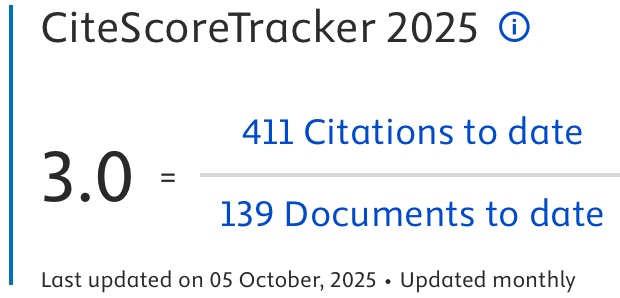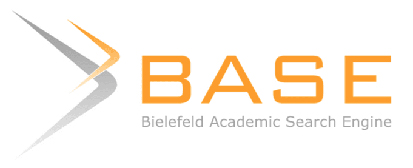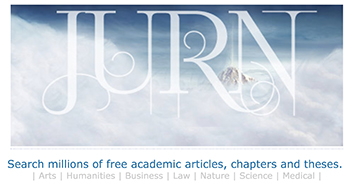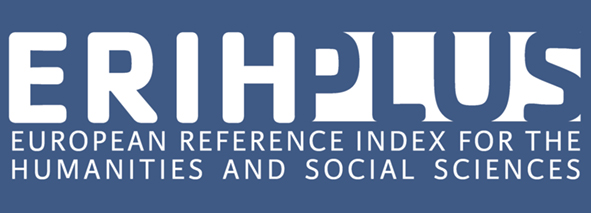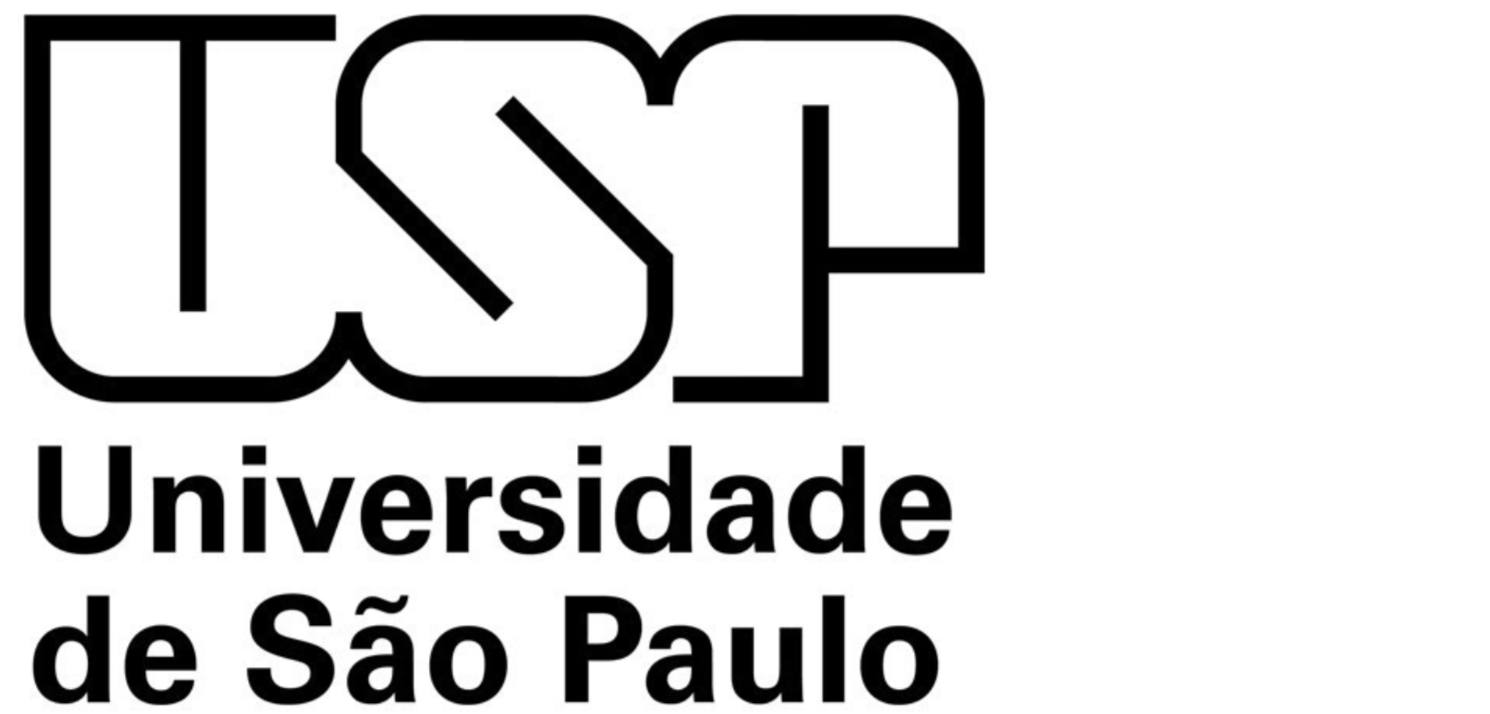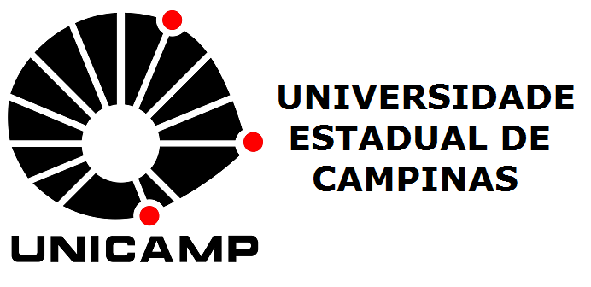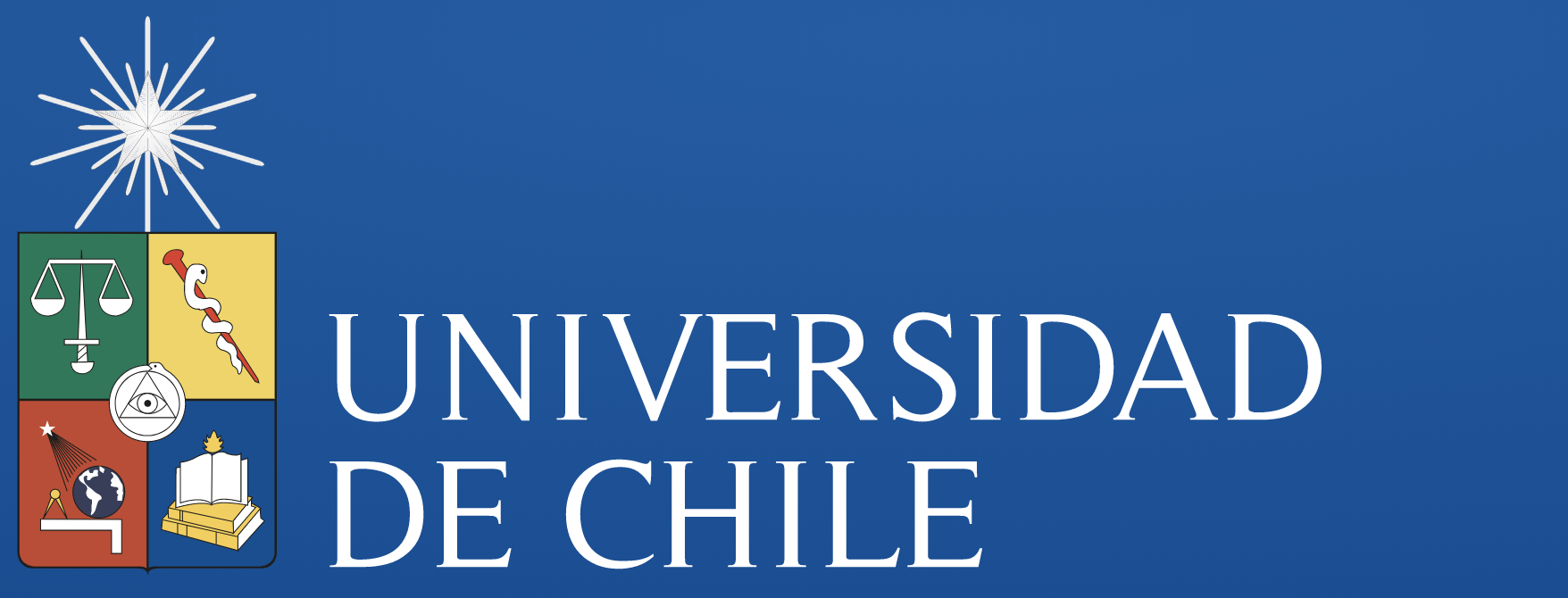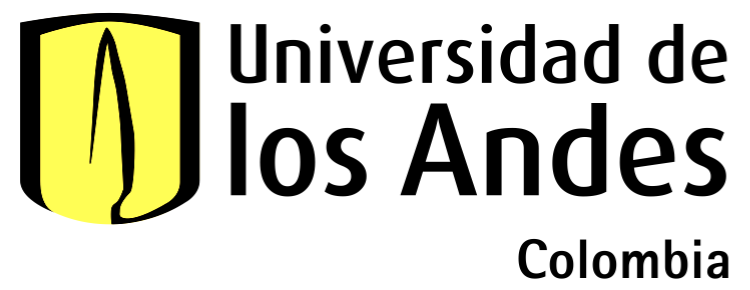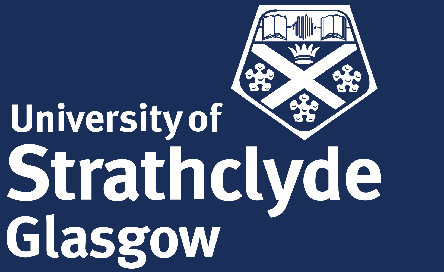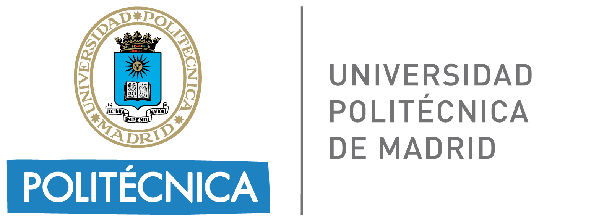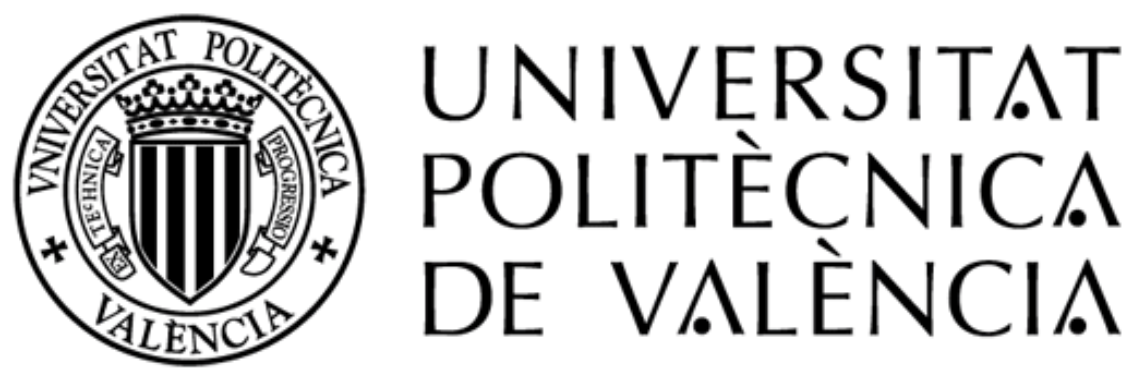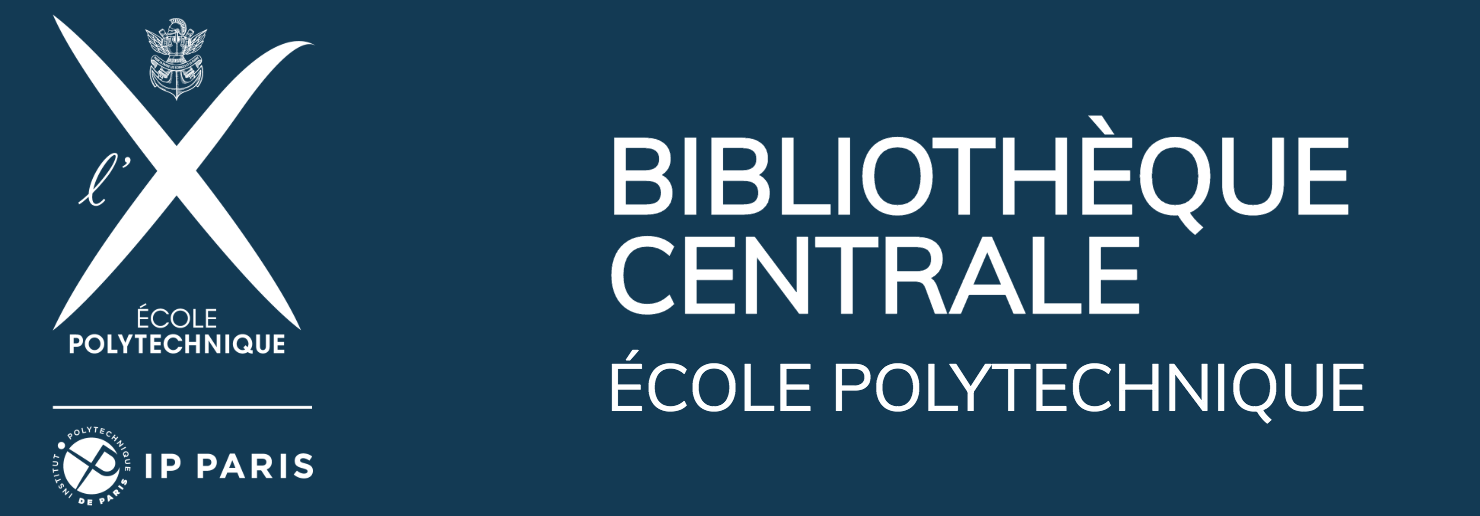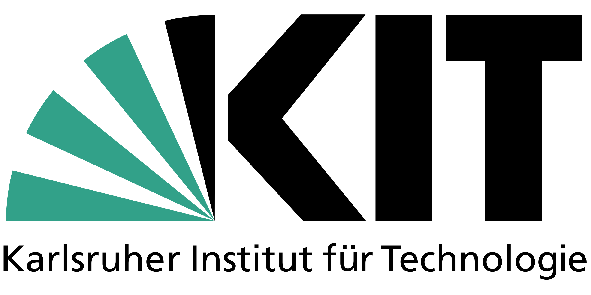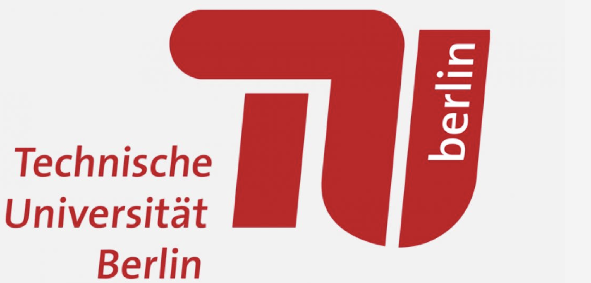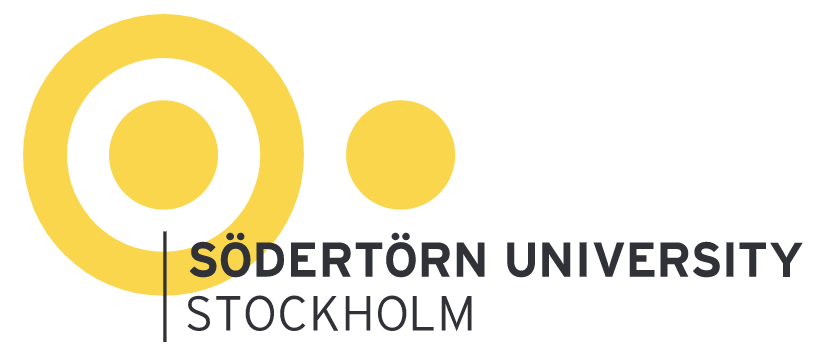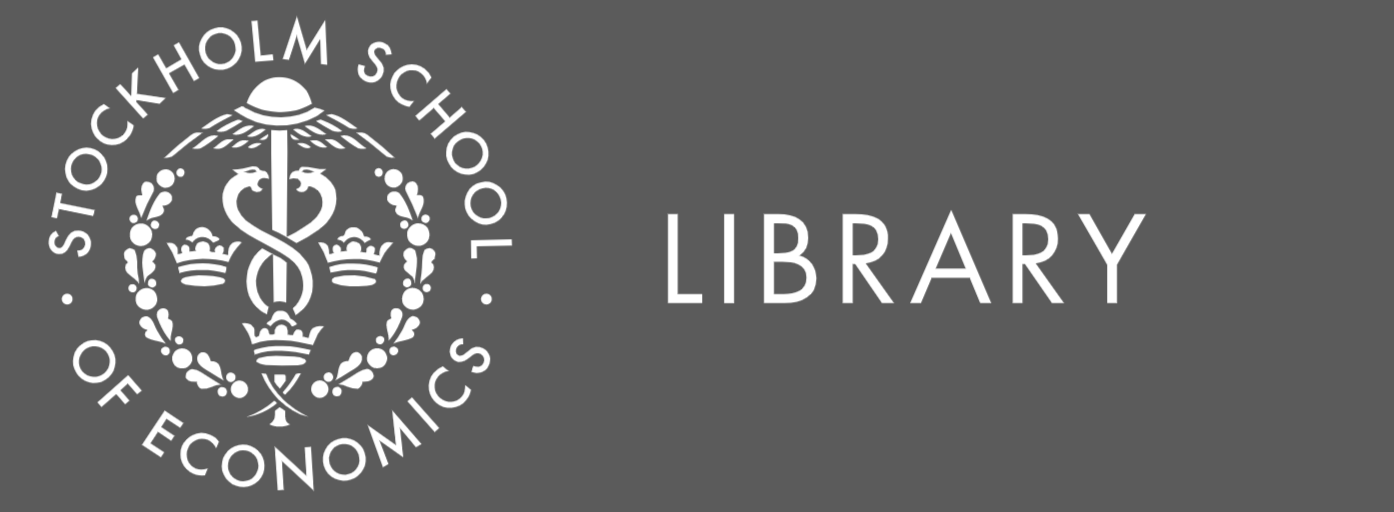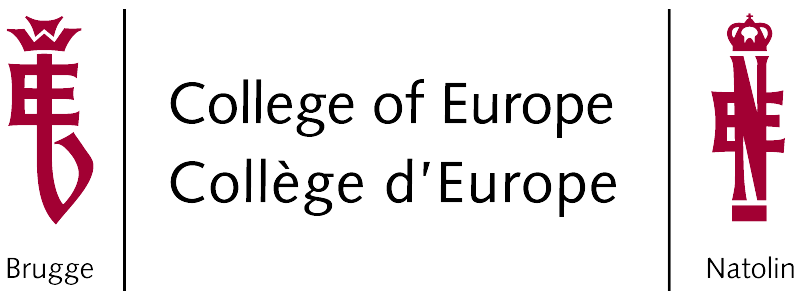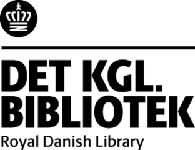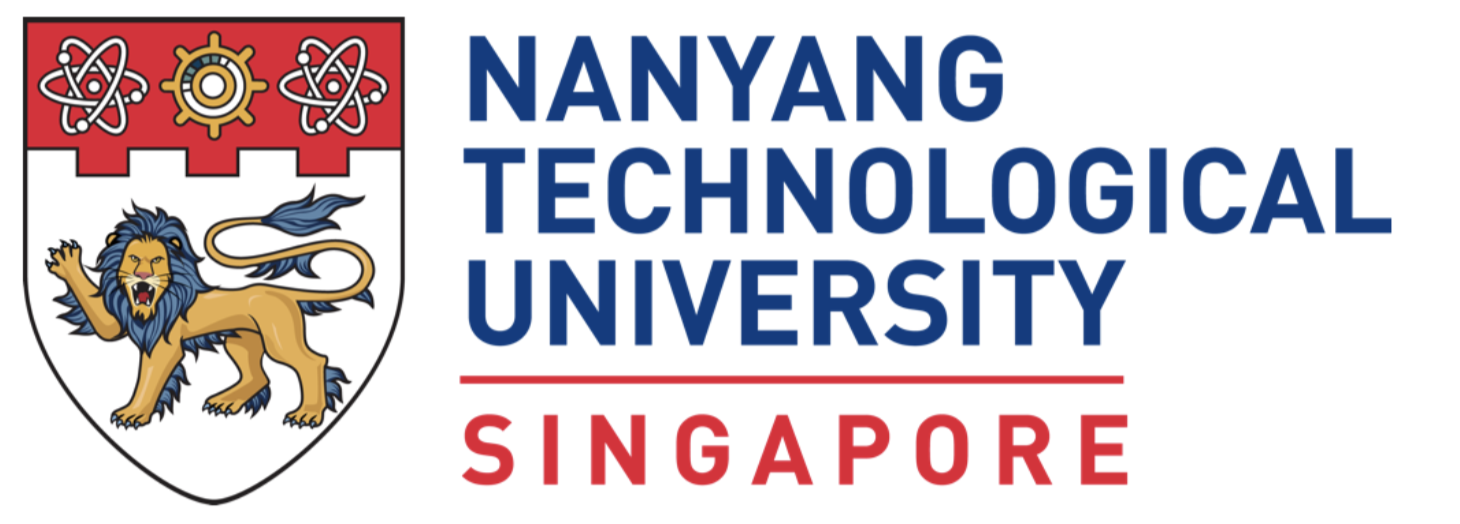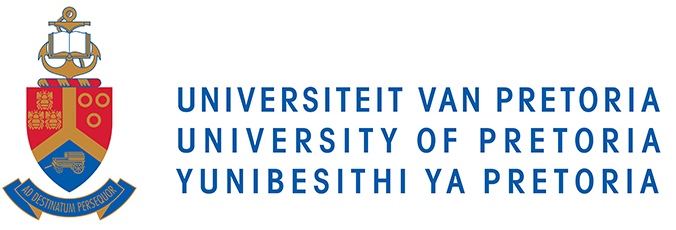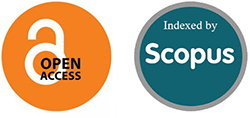
AGATHÓN
International Journal
of Architecture, Art and Design
ISSN (online) 2532-683X
ISSN (print) 2464-9309
Call for Papers
If you don't receive Calls for Papers from AGATHÓN, sign up by clicking on this LINK
CALL FOR PAPERS N. 19 | 2026
Industry, Innovation, and Infrastructure (SDG 9), and Reduce Inequalities (SDG 10)| Projects, research, synergies, and trade-offs with the 17 SDGs
abstract submission deadline | January 10, 2026
The International Scientific Committee, for no. 19 | 2026, which will be published in June 2026, has proposed the subject Industry, Innovation, and Infrastructure (SDG 9), and Reducing Inequalities (SDG 10) | Projects, research, synergies, and trade-offs with the 17 SDGs to select contributions that will be published in volume 19 in June 2026. The two themes are part of the 17 Sustainable Development Goals (SDGs), adopted in September 2015 by the Member States of the United Nations (UN, 2015) and promoted as a call for urgent action capable of combining prosperity, equitable development, and protection of our planet. This would be achieved by valuing cooperation and partnerships between different countries, between national governments and local administrations, between public institutions and private companies and between civil society and individuals. However, only five years after the date given for their attainment, the call seems not to have been fully addressed, if not disregarded, and therefore the scientific community cannot and should not shy away from reflecting on ‘where we have got to’, ‘where we are going’, and ‘where we still might be able to go’.
An assessment of progress based on data was conducted by the Global Sustainable Development Report, which called for appropriate adjustments and an urgent acceleration of implementation policies in two subsequent documents (IGS 2019, 2023): without these adjustments, humanity will face prolonged periods of crisis and uncertainty, further endangering the global principle of ‘leaving no one behind’ and safeguarding the entire ecosystem. While the 2019 Report noted that for some goals, the international community would need to speed up, and for many others, it confirmed that the world was on the right path, the situation portrayed in the 2023 Report is significantly different, as it reveals that for some goals, progress has not accelerated enough, and for others – such as food security, climate action, and biodiversity protection – the world is still moving in the wrong direction.
In light of this scenario, it is more urgent than ever to evaluate ‘what needs to be done and how it can be done strategically’, considering that, as stated by the United Nations during the definition of the SDGs (UN, 2015) and confirmed in the 2019 Report, most goals are synergistic. Social and environmental ones, in particular, have systemic impacts that drive overall progress toward achieving all other SDGs. Despite the rapid growth in scientific literature on the interconnections between the SDGs and the fact that numerous studies suggest synergies outweigh trade-offs, there is still significant potential, yet to be fully explored and leveraged, to make simultaneous progress on multiple goals through integrated planning and appropriate strategies. Specifically, Goals 1 (No Poverty), 2 (Zero Hunger), 3 (Good Health and Well-being), 4 (Quality Education), 5 (Gender Equality), 6 (Clean Water and Sanitation), 7 (Affordable and Clean Energy), and 17 (Partnership for the Goals) are identified as strategic, as they are capable of generating benefits for many other goals (Barbier and Burgess, 2019; Randers et alii, 2019; Pham-Truffert et alii, 2020).
Nevertheless, achieving the SDGs also necessarily imposes trade-offs that often result in critical issues not resolved by current practices. Examples are the actions and strategies promoting Goal 2 (Zero Hunger), where land cultivation and intensive agricultural practices generate soil degradation, pollution and loss of biodiversity, or those related to Goal 8 (Decent Work and Economic Growth) when uncontrolled growth and development result in exploitation of natural resources beyond sustainable limits. These critical issues are confirmed by the recent Global Sustainable Development Report (IGS, 2023), according to which progress on Goals 14 (Life Below Water) and 15 (Life on Land) is more negatively affected by progress in other areas than positively by specific actions.
Given all these variables, it is essential to carefully understand the interconnections in terms of synergies and trade-offs, both to guide scientific research and define methods and tools that can effectively reduce compromises, address uncertainties, and capitalise on specific context opportunities. This understanding also supports strategic decision-making processes and promotes ‘revolutionary’ interventions. Many tools and methods are currently available for an integrated analysis of the Goals, for decision support, and for progress monitoring (Barquet et alii, 2022), such as the toolbox with guidelines for ex-ante impact assessment promoted by the European Commission (2023). However, considering the systemic effects of policies, pathways, measures, and actions, a greater capacity to think in systems is required, representing the best approach to optimise interactions among SDGs.
In light of these reflections, AGATHÓN addresses the fields of Landscape, Urban Planning, Architectural and Urban Design, Engineering, Architectural Technology, Design, Restoration and Recovery, and Representation and proposes the theme Industry, Innovation, and Infrastructure (SDG 9), and Reduce Inequalities (SDG 10) | Projects, research, synergies, and trade-offs with the 17 SDGs. The goal is to stimulate an open dialogue by collecting essays, critical reflections, research and experimentation, and innovative multidisciplinary and multiscale projects and interventions. These submissions should employ a systemic approach and address aspects of the process – such as design, production / realisation, and management – along with methodologies and models for ex-ante and ex-post evaluation, while overcoming limitations, gaps, and barriers to enhance synergies and minimise trade-offs with other goals.
The built environment interacts with every goal and also represents a significant challenge, as it consumes vast amounts of energy and natural resources while continuously producing harmful gases and waste. Moreover, the way we intervene can exacerbate inequalities and impact human health. This is particularly relevant in cities, where the importance of both vulnerability and growth opportunities is evident across all the SDGs, especially considering that by 2050, approximately 70% of the global population is projected to live in urban areas (UN-Habitat, 2022). There is once again an urgent need for strategically planned, designed and implemented anthropogenic action consistent with multiple SDGs that can ensure the improvement of a community’s overall quality of life, sustainability, social equity, health and resilience.
SDG 9 | Industry, Innovation, and Infrastructure | At the start of a century marked by multiple environmental, social, and economic crises, SDG 9 stands out as the strategic framework for all development policies, with the aim of rebuilding industry, investing in innovation, and naturalising infrastructure so that it generates economic value and development without exceeding planetary boundaries, while offering opportunities to marginalised individuals and territories.
Industry 5.0 aims to place well-being, health, and accessibility on the same level as productivity and energy efficiency: only a balance between these factors can contain the cost of goods, raise product quality, and strengthen social cohesion. Short supply chains that use plant-based raw materials, secondary materials, or materials derived from agricultural waste are opening up new fields of research into bio-based materials and ‘zero waste’ cycles, reducing resource consumption and transport emissions. Collaborative robotics, 3D printing at all scales, and biotechnology, together with digital manufacturing, enable the creation of low-cost objects and increasingly lightweight, durable, and sustainable constructions, while open-data platforms and digital dashboards make material and energy flows transparent, promoting informed and shared decisions among designers, businesses, administrations, and citizens. New product-service models, predictive maintenance, artificial intelligence, IoT, and extended life cycles further reduce the ecological footprint.
Digital transformation is also reshaping the language of design: parametric and generative modeling, verbal design modeling, Large Language Model, 6D-7D simulations, and digital twins enable ex ante and ex post performance and impact assessments of objects, buildings, and neighborhoods by integrating environmental, energy, and social data, while widespread sensor technology, machine learning, and interoperability between open BIM and participatory GIS support responsive bioclimatic systems, phase-change materials, and smart facades that optimise the microclimate.
Infrastructures take on multiple ecological functions: green-blue corridors and biodiversity oases sequester carbon, regulate water, and mitigate urban heat, while new forms of horizontal and vertical urban agriculture and nature-based solutions to address hydro-climatic risks open up fields of research on land use compensation and biophilic solutions. The regeneration of built heritage and industrial archaeology into cultural and energy infrastructure can enhance material capital and collective memory, thanks in part to immersive tools and augmented reality that can recount the evolution of these places, stimulate public participation, and disseminate best practices.
SDG 10 | Reduce Inequalities | The growing gaps in income, services and representation undermine social cohesion and increase the vulnerability of communities in the face of social, health and economic crises. Reducing these inequalities requires reconfiguring the built environment as an infrastructure of equity, capable of bridging the gaps between the centre and the periphery, between different socio-demographic groups and between urban and rural areas. From this perspective, grey infrastructure can be transformed into accessible green corridors, equipped with soft mobility routes and local micro-services that facilitate intercultural encounters; Social housing integrated with multifunctional public spaces becomes a catalyst for inclusion, while flexible and culturally sensitive housing solutions (co-housing, expandable modules, assisted self-build, etc.) meet the needs of families with variable incomes, the elderly, migrants and people with disabilities by applying the principles of ‘design for all’.
Replicable low-tech technologies and off-grid systems for water and energy can help reduce infrastructural poverty in marginal contexts; light retrofit models make existing buildings energy efficient at low cost; open-source artefacts, multilingual interfaces and digital mutualism platforms have the potential to facilitate active community involvement. Built heritage, if reactivated as a civic and productive space, can counter depopulation and strengthen local identities, while the regeneration of industrial areas and disused buildings into cultural and energy hubs can generate employment and revive local economies.
Digital tools – participatory GIS, social digital twins, narrative augmented reality – make it possible to map needs, desires and vulnerabilities, assess the distributional effects of plans and projects in real time, and guide corrective actions. The interaction of urban agriculture, blue-green infrastructure and job placement programmes can open up scenarios in which community gardens, community vertical farms and neighbourhood composting systems produce healthy food, employment and cohesion, while big data analysis can facilitate the simulation of scenarios useful for redistributing benefits and burdens, assessing the employment impacts of regeneration interventions and designing service networks based on the ‘15-minute’ paradigm.
Alongside these physical and digital actions, the symbolic dimension of space – colour, materials, signage, participatory storytelling, etc. becomes a vehicle for mutual recognition and collective care, reducing perceived conflicts and promoting a sense of belonging. Urban regeneration, technological innovation and cultural co-creation thus converge to translate the principle of ‘leaving no one behind’ into inclusive, resilient and socially just environments.
CALL FOR PAPERS N. 18 | 2025
Water (SDG 6), Energy (SDG 7), Decent Work and Economic Growth (SDG 8) | Projects, research, synergies, and trade-offs with the 17 SDGs
abstract submission deadline | July 5, 2025
The International Scientific Committee, for no. 18 | 2025, which will be published in December 2025 has proposed the subject Water (SDG 6), Energy (SDG 7), and Decent Work and Economic Growth (SDG 8) | Projects, research, synergies, and trade-offs with the 17 SDGs. Subsequently, further volumes will be published on the 17 Sustainable Development Goals (SDGs) adopted in September 2015 by the United Nations (UN 2015) and promoted as a call for urgent action capable of combining prosperity, equitable development and protection of our Planet, all of which emphasise cooperation and partnerships between different countries, national and local governments, public institutions and private businesses, and civil society and individuals. However, with only five years remaining before the SDG deadline, progress has been uneven and at times overlooked or disregarded. Therefore, the scientific community has a responsibility to reflect on ‘where we stand’, ‘where we are headed’, and ‘what we may yet achieve’.
An assessment of progress based on data was conducted by the Global Sustainable Development Report, which called for appropriate adjustments and an urgent acceleration of implementation policies in two subsequent documents (IGS 2019, 2023): without these adjustments, humanity will face prolonged periods of crisis and uncertainty, further endangering the global principle of ‘leaving no one behind’ and safeguarding the entire ecosystem. While the 2019 Report noted that, for some goals, the international community would need to speed up, and for many others, it confirmed that the world was on the right path, the situation portrayed in the 2023 Report is significantly different, as it reveals that for some goals, progress has not accelerated enough, and for others – such as food security, climate action, and biodiversity protection – the world is still moving in the wrong direction.
In light of this scenario, it is more urgent than ever to evaluate ‘what needs to be done and how it can be done strategically’, considering that, as stated by the United Nations during the definition of the SDGs (UN, 2015) and confirmed in the 2019 Report, most goals are synergistic. Social and environmental goals, in particular, have systemic impacts that drive overall progress toward achieving all other SDGs. Despite the rapid growth in scientific literature on the interconnections between the SDGs and the fact that numerous studies suggest synergies outweigh trade-offs, there is still significant potential, yet to be fully explored and leveraged, to make simultaneous progress on multiple goals through integrated planning and appropriate strategies. Specifically, Goals 1 (No Poverty), 2 (Zero Hunger), 3 (Good Health and Well-being), 4 (Quality Education), 5 (Gender Equality), 6 (Clean Water and Sanitation), 7 (Affordable and Clean Energy), and 17 (Partnership for the Goals) are identified as strategic, as they are capable of generating benefits for many other goals.
Nevertheless, achieving the SDGs also necessarily imposes trade-offs that often result in critical issues not resolved by current practices. Examples of this are the actions and strategies promoting Goal 2 (Zero Hunger), where land cultivation and intensive agricultural practices generate soil degradation, pollution and loss of biodiversity, or those related to Goal 8 (Decent Work and Economic Growth) when uncontrolled growth and development result in exploitation of natural resources beyond sustainable limits. These critical issues are confirmed by the recent Global Sustainable Development Report (IGS, 2023), according to which progress on Goals 14 (Life Below Water) and 15 (Life on Land) is more negatively affected by progress in other areas than positively by specific actions.
Given all these variables, it is essential to carefully understand the interconnections in terms of synergies and trade-offs, both to guide scientific research and define methods and tools that can effectively reduce compromises, address uncertainties, and capitalise on specific context opportunities. This understanding also supports strategic decision-making processes and promotes ‘revolutionary’ interventions. Many tools and methods are currently available for an integrated analysis of the Goals, for decision support, and for progress monitoring, such as the toolbox with guidelines for ex-ante impact assessment promoted by the European Commission (2023). However, considering the systemic effects of policies, pathways, measures, and actions, a greater capacity to think in systems is required, representing the best approach to optimise interactions among SDGs.
Expanding on these reflections, AGATHÓN addresses the fields of Landscape, Urban Planning, Architectural and Urban Design, Engineering, Architectural Technology, Design, Restoration and Recovery, and Representation, and proposes the theme Water (SDG 6), Energy (SDG 7), and Decent Work and Economic Growth (SDG 8) | Projects, Research, Synergies, and Trade-offs with the 17 SDGs. The goal is to foster debate by gathering essays, critical reflections, research, experiments, projects, and interventions that adopt an innovative, multidisciplinary, and multiscalar approach. Contributions should adopt a systemic perspective, addressing process dynamics – from design and production to implementation and management – while incorporating ex-ante and ex-post evaluation methodologies and models.
The focus is on overcoming limitations, bridging gaps, breaking barriers, enhancing synergies, and minimising trade-offs to better align with the broader SDG framework, as the built environment interacts with every Sustainable Development Goal (SDG) while also representing a critical challenge. On one hand, it is a major consumer of energy and natural resources, as well as a relentless producer of harmful emissions and waste. On the other hand, the way we intervene in the built environment can worsen inequalities and impact human health. This is especially significant in cities, whose vulnerability and potential for growth are embedded across all SDGs. By 2050, approximately 70% of the global population is expected to live in urban areas (UN-Habitat, 2022), making strategic action even more urgent. There is the need, now more than ever, for a deliberate and well-planned human intervention – one that is designed and implemented in alignment with as many SDGs as possible, to enhance overall quality of life, sustainability, social equity, public health, and community resilience.
SDG 6 | Clean Water and Sanitation | Water is a primary good not only for humans but for all forms of life on Earth: it is a right and a valuable resource for the entire ecosystem endangered by climate change, land occupation, extensive cultivation, and indiscriminate exploitation of the resource. Water represents the critical link between society and the environment as it is central to sustainable socio-economic development and the achievement of many SDGs, particularly those related to health, education, the economy, the environment, energy and food production, and the resilience of territories and communities. Architectural disciplines can play a key role in addressing the challenge of reducing, reusing, recycling, regenerating, and recovering water by intervening at different scales to enhance its circularity. This approach can eliminate pressure on existing water resources and promote the concept of ‘multiple water’, sourced from both conventional and alternative supplies, through integrated design, engineering, and technological solutions across various sectors. Such strategies create opportunities for innovation, governance, and resource management, improving resilience to extreme rainfall, droughts, and flooding while restoring water-related ecosystems, protecting biodiversity, and reducing water pollution. Effective interventions can include controlling urban expansion, preserving or restoring soil permeability in both private and public spaces – such as parking lots, courtyards, and plazas – to mitigate the urban heat island effect. Additionally, designing infrastructures like water squares, rain gardens, stormwater tree trenches, and bioswales can help regulate stormwater runoff, while enhancing the role of natural and artificial wetlands. Further measures involve optimising water use in agriculture, livestock, and industry through innovative processes and technologies, such as hydroponics, permaculture, precision farming, and soil moisture sensors. Net-zero water buildings also offer a sustainable solution by managing water within closed-loop systems, sometimes operating independently from municipal supplies. In these cases, water can be reused in green roofs and walls, or purified through phytoremediation systems. The integration of digital tools can further enhance efficiency and performance, particularly in interconnected water-energy systems designed for sustainability and resilience.
SDG 7 | Clean and Accessible Energy | Energy is essential not only for individual well-being but also for the development and inclusive growth of societies. The implementation of sustainable energy production systems is a central focus of both national and international policies, representing one of the greatest challenges but also a significant opportunity in humanitarian, social, environmental, and economic terms. Energy influences fundamental aspects of life, including food security, poverty, employment, safety, healthcare, education, water supply, industrial production, climate change, communication, and access to the internet and digital technologies. Architectural disciplines can play a key role in addressing energy challenges in construction, transportation, industry, and agriculture by adopting cross-sectoral, multi-scalar, and interdisciplinary approaches and tools (both material and immaterial), as well as nature-based solutions. A systemic approach can integrate strategies that promote, for both new and existing contexts, by way of example: the production of energy from renewable sources with wind, photovoltaic, geothermal and hydrogen plants (but also with sustainable forests), their integration in built and natural contexts (of historical-cultural and environmental-landscape value) and strategies for their recovery, reuse and recycling at the end of their life; an urban planning and regeneration based on the ‘15-minute city’, Positive Energy Districts, Energy Communities, soft mobility, accessible routes, implementation of public transport in integrated modes and green areas to limit the heat island phenomenon; agricultural production based on low-energy paradigms such as Low-Tech, Permaculture, Solar Planck and hydroponics; site-specific design solutions and architectural typologies, as well as materials, elements, components, technologies, construction techniques, off-grid and passive systems capable of improving the energy efficiency of the building envelope; processes for optimizing and reducing embedded and operational energy consumption; the promotion of natural-based materials, local or zero-kilometre supply chains; strategies and actions to raise public awareness and literacy regarding energy conservation.
SDG 8 | Decent Work and Economic Growth | Employment and economic growth play a crucial role in combating poverty, as they are closely linked to all other SDGs in both developing countries and industrialized economies. The built environment interacts with Goal 8 at every scale, from territorial planning to individual objects, and throughout all stages of the construction process. This impact is maximized when supported by policies that incentivize productive activities, promote the creation of skilled jobs – thus ensuring equal opportunities and inclusion for disadvantaged groups – encourage the development of micro, small, and medium-sized enterprises, and promote creativity and innovation, and as guiding values in corporate policies.
However, sustainable and inclusive development cannot disregard knowledge of the planet’s limits and must be able to separate economic growth from indiscriminate use of non-renewable resources, preferring actions of recovery, recycling, reuse and upcycling. Various approaches and numerous strategies contribute to achieving this goal: the regeneration of degraded urban areas with the creation of green infrastructure and neighbourhood services for the improvement of residents’ quality of life, of municipalities affected by depopulation with the enhancement of renewable resources, culture, traditions, and local products, also for tourism purposes, or of buildings or real estate complexes of historical and cultural significance with restoration and reuse actions for services for the local community; the promotion of research and development activities for innovation and of cooperation projects and public-private partnerships with NGOs, universities, the public and private sectors to promote the sustainable development of local economies; the enhancement of skills (linked both to tradition and to new digital technologies) and the systematization of multidisciplinary knowledge aimed both at the optimization of production processes and at the development of low-impact natural materials and elements, components, and assembly systems usable in multiple life cycles and with long durability; the increase in productivity levels through diversification, technological upgrading, and innovation, promoting local supply chains also among different sectors or focusing on high value-added and high-employment sectors; the development and promotion of new modes of service delivery, communication, and training, leveraging the potential of digital technology through dedicated and interactive platforms and portals.
CALL FOR PAPERS N. 17 | 2025
SDGs 1, 2, 3, 4 and 5 | Projects, research, synergies, and trade-offs
abstract submission deadline | January 15, 2025
The International Scientific Committee, for no. 17 | 2025, which will be published in June, has proposed the subject SDGs 1, 2, 3, 4 and 5 | Projects, research, synergies, and trade-offs. Subsequently, further volumes will be published on the 17 Sustainable Development Goals (SDGs) adopted in September 2015 by the United Nations member states (UN 2015) and promoted as a call for urgent action to combine prosperity, equitable development, and protection of our planet. This would be achieved by valuing cooperation and partnerships between different countries, between national governments and local administrations, between public institutions and private enterprises, and between civil society and individuals. However, only six years after the date given for their attainment, the call seems not to have been fully addressed, if not disregarded, and therefore the scientific community cannot and should not shy away from reflecting on ‘where we have got to’, ‘where we are going’, and ‘where we still might be able to go’.
An assessment of progress based on data was conducted by the Global Sustainable Development Report, which called for appropriate adjustments and an urgent acceleration of implementation policies in two subsequent documents (IGS 2019, 2023): without these adjustments, humanity will face prolonged periods of crisis and uncertainty, further endangering the global principle of ‘leaving no one behind’ and safeguarding the entire ecosystem. While the 2019 Report noted that for some goals, the international community would need to speed up, and for many others, it confirmed that the world was on the right path, the situation portrayed in the 2023 Report is significantly different, as it reveals that for some goals, progress has not accelerated enough, and for others – such as food security, climate action, and biodiversity protection – the world is still moving in the wrong direction.
In light of this scenario, it is more urgent than ever to evaluate ‘what needs to be done and how it can be done strategically’, considering that, as stated by the United Nations during the definition of the SDGs (UN, 2015) and confirmed in the 2019 Report, most goals are synergistic. Social and environmental ones, in particular, have systemic impacts that drive overall progress toward achieving all other SDGs. Despite the rapid growth in scientific literature on the interconnections between the SDGs and the fact that numerous studies suggest synergies outweigh trade-offs, there is still significant potential, yet to be fully explored and leveraged, to make simultaneous progress on multiple goals through integrated planning and appropriate strategies. Specifically, Goals 1 (No Poverty), 2 (Zero Hunger), 3 (Good Health and Well-being), 4 (Quality Education), 5 (Gender Equality), 6 (Clean Water and Sanitation), 7 (Affordable and Clean Energy), and 17 (Partnership for the Goals) are identified as strategic, as they are capable of generating benefits for many other goals (Barbier and Burgess, 2019; Randers et alii, 2019; Pham-Truffert et alii, 2020).
Nevertheless, achieving the SDGs also necessarily imposes trade-offs that often result in critical issues not resolved by current practices. Examples are the actions and strategies promoting Goal 2 (Zero Hunger), where land cultivation and intensive agricultural practices generate soil degradation, pollution and loss of biodiversity, or those related to Goal 8 (Decent Work and Economic Growth) when uncontrolled growth and development result in exploitation of natural resources beyond sustainable limits. These critical issues are confirmed by the recent Global Sustainable Development Report (IGS, 2023), according to which progress on Goals 14 (Life Below Water) and 15 (Life on Land) is more negatively affected by progress in other areas than positively by specific actions.
Given all these variables, it is essential to carefully understand the interconnections in terms of synergies and trade-offs, both to guide scientific research and define methods and tools that can effectively reduce compromises, address uncertainties, and capitalise on specific context opportunities. This understanding also supports strategic decision-making processes and promotes ‘revolutionary’ interventions. Many tools and methods are currently available for an integrated analysis of the Goals, for decision support, and for progress monitoring (Barquet et alii, 2022), such as the toolbox with guidelines for ex-ante impact assessment promoted by the European Commission (2023). However, considering the systemic effects of policies, pathways, measures, and actions, a greater capacity to think in systems is required, representing the best approach to optimise interactions among SDGs.
In light of these reflections, AGATHÓN addresses the fields of Landscape, Urban Planning, Architectural and Urban Design, Engineering, Architectural Technology, Design, Restoration and Recovery, and Representation and proposes the theme SDGs 1, 2, 3, 4, and 5 | Projects, research, synergies, and trade-offs. The goal is to stimulate an open dialogue by collecting essays, critical reflections, research and experimentation, and innovative multidisciplinary and multiscale projects and interventions. These submissions should employ a systemic approach and address aspects of the process – such as design, production / realisation, and management – along with methodologies and models for ex-ante and ex-post evaluation, while overcoming limitations, gaps, and barriers to enhance synergies and minimise trade-offs with other goals.
The built environment interacts with every goal and also represents a significant challenge, as it consumes vast amounts of energy and natural resources while continuously producing harmful gases and waste. Moreover, the way we intervene can exacerbate inequalities and impact human health. This is particularly relevant in cities, where the importance of both vulnerability and growth opportunities is evident across all the SDGs, especially considering that by 2050, approximately 70% of the global population is projected to live in urban areas (UN-Habitat, 2022). There is once again an urgent need for strategically planned, designed and implemented anthropogenic action consistent with multiple SDGs that can ensure the improvement of a community’s overall quality of life, sustainability, social equity, health and resilience.
SDG 1 | No Poverty | Poverty is more than just a lack of income and resources; it can mean malnutrition, limited access to education and other basic services, as well as lead to discrimination, social exclusion, and lack of participation in decision-making processes. The poverty index is, therefore, multidimensional, considering the deprivations households face in terms of health, education, and standard of living. Architecture disciplines, through their work on the built environment, can mitigate the impact of poverty on people’s lives by planning and developing settlements with services, education, healthcare facilities, cultural and recreational spaces, and affordable, safe, healthy buildings with low environmental impact and reduced operational costs. Additionally, these initiatives can incorporate goods inspired by the ‘reverse innovation’ philosophy.
SDG 2 | Zero Hunger | Land and marine surfaces are rapidly degrading, and climate change is increasing pressure on the resources we depend on, exponentially raising the risks associated with natural disasters. Strategic and site-specific planning, especially in areas where fertile land is scarce due to urban density, harsh climatic conditions, or limited access, can help ensure food security at various territorial scales. This can be achieved through regenerative landscape design and urban agriculture (such as pocket gardens, orchard parks, urban gardens, and vertical farms). Such initiatives can also promote value chains across different productive sectors, contribute to preserving or restoring biodiversity even in densely populated urban areas, support rural development, and foster accessibility, inclusivity, social interaction, and a sense of community belonging.
SDG 3 | Good Health and Well-Being | Ensuring healthy lives and promoting well-being for all and at all ages is important for building prosperous societies. However, despite progress in recent years, inequalities in access to health care, lack of preventive care facilities, and very high levels of environmental pollution persist in several areas of the world. Again, the disciplines of Architecture can play a crucial role in creating a built environment that supports good health and well-being through, for example, the creation of quality social and healthcare facilities, workplaces and residences with a healthy microclimate, optimising natural light, acoustics and indoor air quality, avoiding the use of environmentally harmful materials and substances, and also ensuring flexibility, modularity and accessibility of spaces and objects such that they meet the needs of vulnerable users in particular. The design of green infrastructure, public parks and gardens, public spaces and services for physical activity, as well as product-services, tools and devices, can also contribute to the achievement of the goal, along with urban regeneration interventions that limit vehicular traffic in support of soft and public transportation mobility.
SDG 4 | Quality Education | Achieving quality education is the foundation for creating sustainable development, as it not only improves the quality of life but also helps individuals access a decent income and gain the tools necessary to develop innovative solutions, even for complex issues like climate change and environmental sustainability. The disciplines of architecture can play a key role by providing tools, services, and communicative artefacts that support education, and by designing and redeveloping educational facilities that meet contemporary needs. Such environments should be stimulating, characterised by flexibility of use and multifunctionality, accessible to vulnerable users, and inclusive of ethnic and religious minorities. Acting as social hubs within their communities throughout the year, they can also promote a new culture of sustainability focused on achieving the 17 SDGs.
SDG 5 | Gender Equality | Gender equality is not only a basic human right but a fundamental requirement for a peaceful, prosperous and sustainable world. However, gender inequality, primarily for women, persists throughout the world, denying basic rights and opportunities. The disciplines of Architecture can support Goal 5 through the creation of places to live and move around safely (e.g., with well-lit pathways, safe parking areas, access control systems in public transportation and video surveillance, etc. ), specific social and health services spread throughout the territory, adequately equipped public recreational facilities and spaces, creating the conditions for work-life balance, and maternity and childcare facilities, promoting greater gender equality at home and in the workplace, thus also enhancing the opportunities offered by more significant social interaction, community engagement, active participation in decision-making processes and empowerment within the reference context.
CALL FOR PAPERS N. 16 | 2024
DEALING WITH COMPLEXITY | Knowledge, design, and management of the built environment
abstract submission deadline | July 07, 2024
The International Scientific Committee, for no. 16 | 2024, which will be published in December, has proposed the subject Dealing with Complexity | Knowledge, design, and management of the built environment.
Complexity (from the Latin verb ‘plectere’ = to weave, ‘cum’ = together) is a condition in which many elements intertwine together to form a unit. Various definitions can be found in the scientific field: in the volume Complexity – A Guide Tour, Melanie Mitchell (2021) explains complexity by arguing that when faced with defining something that one does not know, one defines it as something unknown and over which they have no control; George E. Mobus and Michael C. Kalton (2015), in Principles of System Science, define complex systems as nonlinear – and therefore reticular – systems made up of parts, nodes, lines, and interactions that connect them according to logics that are not always known and sometimes privileging certain relationships over others; Ceruti and Bardi (2021) argue that complexity – as well as that which is complex – cannot be simplified, and that one of the characteristics of complex systems relates to the fact that they are not entirely predictable, and finally that their governance and control are important because failure to understand complex systems makes it impossible to manage them. Federico Butera (2021), in his volume Affrontare la Complessità (lit. Dealing with Complexity), through a broad vision and exhaustive data, portrays the particular condition in which our Planet finds itself: although mainly informative, the volume is based on the results of scientific research conducted by International Organizations and academics to restore a profoundly complex reality in which climatic and environmental phenomena affect human and social ones, and vice versa (Fioramonti, 2021) and reveal how the biosphere is governed by a system of multidimensional relationships and interconnections, for which even small changes in a specific context determine chain reactions in different spheres, affecting both nature and human beings on a global scale.
If in the past man was one of the many factors that modified the ecosystem, today anthropogenic activity is considered one of the main causes of climate change and the rise in land and sea temperatures, to such an extent that the era in which we live has been named Anthropocene (Crutzen and Stoermer, 2000): since the second half of the century, human activities and progress (scientific and technological) have produced tangible and exponentially accelerated effects on the biosphere, on the one hand making the balance of its ecosystem precarious, on the other affecting security, health, well-being as well as the availability of goods and livelihoods of its inhabitants (Meadows et alii, 1972; Apreda, D’Ambrosio and Di Martino, 2019). The ‘complexity’ of the Planet’s condition is evident: climate change, according to Amitav Ghosh (2017), is not a danger in itself, but rather represents a ‘threat multiplier’ that stresses and amplifies the instability and insecurity already present in some areas of the world, even more so because many industrialized countries have already greatly exceeded their relative ‘biocapacity’ (Beyers and Wackernagel, 2019), effectively becoming ‘ecological creditors’ (Świąder et alii, 2020). Thomas L. Friedman (2016) also notes how the condition in which we find ourselves is ‘complex’ and in continuous and exponential evolution: the Planet we inhabit will be very different from the one we know as early as 2030 because it is subject to the three ‘forces’ of Moore’s Law with ‘technology’, the Market with ‘globalization’, and Mother Nature with ‘climate change and biodiversity loss’ all pressing simultaneously on the biosphere.
In this view, ‘complex’ should be brought back to its etymological meaning of ‘woven’ or ‘held together’, connecting different forms of knowledge in the virtuous circle of a body of knowledge articulated in a systemic view of the real world based on the principle of ‘co-evolution’ of social and ecological systems (of culture and nature) and the awareness that it determines; on the one hand, the interweaving of multiple causal chains (e.g., although the pandemic crisis is a health crisis it has also become a biological, ecological, economic, social, cultural and spiritual crisis) with interdependent effects, and on the other hand, effects that also retroact on causes since causality is circular (Bateson, 1979). According to Ceruti and Bardi (2021), unfortunately, it isn’t easy to translate this vision into the workings of everyday life and to guide both the observation of the world and the project, which is an expression of our being in the world.
How we live, regardless of where this happens, has an impact on the biosphere and determines chain reactions in different areas that affect both nature and human beings on a global scale: climate change, health risks, loss of biodiversity, indiscriminate use of non-renewable resources, inequalities, and accessibility contribute to a condition of ‘polycrysis’ Morin (2020) that amplifies the state of uncertainty about our future and the vulnerability of the entire ecosystem, especially since the actions put in place do not address the cogent environmental issue in a systemic and holistic key.
Therefore, the question is, how to transform complexity from challenge to opportunity? How to deal with the complex issues that concern the knowledge, the design, and the management of the built compared to the now essential pragmatic indicators of environmental, social, and economic sustainability? Which strategies, measures, actions, and tools can Architecture disciplines implement in a holistic view and with a systems approach to meet the terms of the Paris Agreement (UN, 2015a)? How to identify those with the best cost/benefit ratio, capable of producing synergies for the achievement of the largest possible number of the Sustainable Development Goals promoted by the United Nations (UN, 2015b)? How to rethink extractive (production-based) economic systems and direct them toward regenerative ones (based on the enhancement of that which already exists and of services)? How to put into practice new systemic design approaches capable of addressing today’s complexities from their roots, developing solutions through which entire societies can intentionally transition to a more sustainable, equitable, and desirable long-term future, including through co-created visions capable of informing the solutions of the present and paving the way to a desirable future (Tonkinwise, 2015)? How to place knowledge and learning into a system to better understand the multidimensional, fundamental, and global issues of the current era in their irreducible complexity?
Based on these reflections, AGATHÓN, in addressing the disciplinary areas of Landscape, Urban Planning, Architectural and Urban Composition, Engineering, Architectural Technology, Design, Restoration and Recovery, and Representation, proposes the theme Dealing with Complexity | Knowledge, design and management of the built environment, with the aim of nurturing an open discussion through the collection of essays and critical reflections, research and experiments, projects and interventions, exclusively of a multidisciplinary and multiscalar nature, innovative and sustainable, addressing issues such as, but not limited to:
• holistic and systemic approach;
• multidisciplinarity and spatial and temporal multiscalarity;
• relationship between ‘sufficiency’ and ‘growth’, between environmental protection and well-being;
• symbiosis between nature and artifice;
• sustainable development, urban regeneration, and climate change mitigation and adaptation;
• synergies and compromises between the different SDGs;
• synergies and compromises between ecological, energy, and digital transitions;
• globalization and glocalization;
• new systems, forms of living, and public space (types and typologies, passive solutions, flexibility of use, mixed-use, accessibility, land use, albedo, space quality, etc.);
• new systems and forms of urban agricultural production (community, horizontal and vertical), and relationships between built, food production, energy, water, waste, biodiversity, sales and consumption, environment, ecosystem, and technologies in a logic of circular urban metabolism;
• new systems and forms of mass and customized industrial production;
• new forms of product/service/system for users (from ownership to sharing; experience design; timelines; touchpoints, gamification, etc.);
• digital tools and technologies for capturing and analysing big data and open-access digital platforms for sharing and managing data across the entire built life cycle (from landscape to small-scale artefact);
• integration and implementation of digital tools for contextual knowledge, project modelling and simulation, and built environment management (e.g., with the integration into Digital Twins of data collected in real-time from sensors);
• integration between life cycle assessment (LCA), ecosystem services assessment (ESA) and environmental risk assessment (ERA/VIA) tools;
• interaction between physical and virtual space (virtual reality, augmented reality, ‘geotagging’, ‘location-based’ advertising, etc.);
• tools, methods and languages of biophilic and ecological design amid performativity, aesthetics of the natural and communication, beyond ‘greenwashing’ (formal, perceptual, symbolic aspects);
• optimization and advanced process management (design, production, product, service, end-of-life, reuse/recycling), non-renewable resources and scrap/waste, for the implementation of sustainable and traceable product life cycles and the energy efficiency of the built environment;
• efficiency and circularity in the use of resources (zero-waste, value chain, urban mining, material bank, bio-material, re-manufacturing, recycling, up-cycling, design for disassembly/durability/flexibility, etc);
• digital manufacturing for the production of sustainable artefacts, products and materials (3D, 4D, 5D) at both large and small scales, also through nano- and biotechnologies;
• …….
CALL FOR PAPERS N. 15 | 2024
INNOVABILITY®© (part III) | Energy Transition
abstract submission deadline | January 15, 2024
The International Scientific Committee, for no. 15 | 2024, which will be published in June, has proposed the subject INNOVABILITY©® (part III) | Energy Transition, aware of its pressing relevance, but also of the scope introduced by the proposed threefold interpretation (with the previous calls Innovability©® part I | Digital Transition, n. 12 | 2022 and Innovability©® part II | Ecological Transition, n. 13 | 2023).
The goals for climate neutrality by 2050 and for a 55% reduction in CO2 emissions (compared to 1990 levels) by 2030 (European Commission, 2019, 2021) pose a range of complex issues for the European Union, and even more so for the rest of the world, including a significant increase in ‘clean’ energy production from alternative and renewable sources, reduction of energy poverty, greater security of energy supplies and a drastic reduction in dependence on energy imports while aiming to foster modern economic growth decoupled from the use of non-renewable resources and job creation and to generate environmental and health benefits. These objectives come with inevitable cultural, political, economic, productive, technological and social implications, to be addressed both within national borders and in the foreign policy arena. Despite various EU and national legislative measures and substantial financial resources allocated, the three main axes of climate policies (reducing emissions and consumption, increasing energy efficiency, and increasing the share of renewables) do not seem to have had the desired virtuous effects.
Recent IPCC Reports (2022, 2023) expose the hard truth about the state of the climate and confirm the urgency for action, indicating that policies put in place from 2020 will lead to a global temperature increase of 3.2°C by the end of the century, and identifying 2025 as the upper limit at which to begin reducing global emissions. The same Reports indicate that the tools to reverse the current trend are already available, but at the same time stress the importance of acting systemically, employing transversal measures, including adaptation and mitigation measures, equally distributed in regions at risk, and with inclusive, transparent, and participatory decision-making processes: in this scenario, energy-related aspects play a strategic role. The energy transition will certainly be an expensive process; according to the World Energy Outlook 2021 (IEA, 2021), 4 trillion dollars per year are needed to hit the 2050 carbon neutrality target, a massive investment that needs to be managed in a reasoned and judicious manner, evaluating all possible options and avoiding the adoption of costly solutions of uncertain effectiveness. Meanwhile, in 2022 the U.S. Congress passed the three climate bills (Inflation Reduction Act, Bipartisan Infrastructure Law, CHIPS and Science Act) that commit more than 500 billion dollars in tax credits, loan guarantees and other investments for the energy transition, while the European Union, with Repower EU and Fit for 55, promoted a 300-billion-euro Plan, of which 225 billion is in funding and grants and 75 billion in loans.
The energy transition is, therefore, complex and difficult to implement because it involves ‘everything’ and is needed ‘everywhere’, and also because, on a global scale, primary energy consumption has been steadily increasing for at least half a century (Ritchie and Roser, 2022). Every human activity requires energy and produces greenhouse gases, and while the United States and Europe represent virtuous geographies in the production of energy from renewable sources, 75% of the world’s population lives in emerging economies such as Brazil, China, India, and South Africa, which today are responsible for two-thirds of total greenhouse gas emissions, while China alone emits more than a quarter: hence the need to think globally instead of locally since climate change is not only a danger in itself but represents a ‘threat multiplier’ (Ghosh, 2017) that stresses and amplifies not only the instability and insecurity already present in some areas of the world but also the global economy: according to the World Economic Forum (WEF, 2021) the most catastrophic scenario, involving a temperature rise of up to 3.2 °C, could wipe out up to 18% of the world’s GDP as soon as mid-century. All of this, needless to say, at great cost in terms of human lives as well.
The present-day is marked by great uncertainty over the stability and validity of the technological, economic, production, energy, and infrastructure systems on which society depends in everyday practices (De Certeau, 2011) and in the dynamics of social production and reproduction (Lefebvre, 2016); because of this, researchers agree on the strategic role of research and the importance of experimentation and exchange of good practices in a ‘clean’ economy based on the efficient use of non-renewable resources and eco-innovation of processes, products, and design solutions (Höpfl et alii, 2022) to lower the production of CO2 emissions. Such a goal can be achieved, in all spheres of the built environment, by overcoming the current limitation represented by the lack of coordinated action from an ‘enlightened direction’ that lacks a systemic vision and is not based on a methodological practice of a multi and interdisciplinary, non-scalar and intersectoral type, capable of simultaneously integrating knowledge, expertise, diverse disciplines and production sectors (sometimes seemingly unrelated) to rationalize and optimize, by combining traditional and innovative technologies, on the one hand, all aspects that come into play in the transformative intervention and its process, project and product dimensions, and, on the other hand, the input and output material flows for them to be ‘at least’ equivalent. In this regard, Terry Irwin’s studies (2018) represent a relevant contribution, proposing a Transition Design approach to address the critical ‘systemic’ issues of our century through five points: 1) visualising and mapping complex problems and their interconnections and interdependencies; 2) placing them within large spatiotemporal contexts; 3) identifying and overcoming stakeholder conflicts and leverage alignments; 4) facilitating stakeholders in co-creating visions of desirable futures; and 5) identifying leverage points in the large problem system in which to place design interventions.
Based on these reflections, AGATHÓN, in addressing the disciplinary areas of Design and in particular Landscape, Urban Planning, Architecture, Engineering, Architectural Technology, Design, Restoration and Recovery, and Representation, proposes the theme of Innovability©® (part III) | Energy Transition to foster an open discussion, through the collection of innovative and sustainable essays and critical reflections, research and experiments, projects and interventions (preferably interdisciplinary and interscalar in nature), that address topics including, but not limited to:
• energy landscapes;
• soft mobility infrastructures and services;
• tools and methods for mapping, cataloguing and dissemination of best practices aimed at the cost-effective containment and zeroing of energy consumption;
• transition design;
• integrated solutions for energy, ecological and digital transitions (green/smart cities, buildings, materials, objects, and services);
• solutions for energy sustainability with effects and benefits at different scales, from urban to indoor and vice versa;
• energy retrofit interventions as drivers of urban regeneration, for suburbs and ancient contexts and for historic, modern, and contemporary architecture;
• tools, methods, and languages of architectural design (overhangs, courtyards, porches, loggias, solar screens, flexibility of use and variability of functions, etc.) with formal, perceptual and symbolic values;
• Near Zero, Net Zero and Positive Energy development models;
• ecological’ solutions for carbon subtraction and storage in urban districts;
• solar albedo mitigation strategies in the buildings-open spaces system;
• responsive/adaptive, passive bioclimatic, nature-based, and biophilic systems;
• innovative components and materials (phase change, energy, etc.) for the reduction of energy consumption;
• Industry 5.0 and embedded and operational energy optimisation through circular approaches, open building, zero waste, recycling, upcycling, design for disassembly, reversible building design, life cycle design, design for longevity, etc;
• ‘circular ecosystems’ for zero-impact energy production from waste or refuse;
• renewable energy production and self-consumption, energy communities, positive energy districts, smart grids, off-grid solutions, microgrids, etc;
• integrated systems for energy production (photovoltaic, solar thermal, micro aeolian, etc.);
• zero-km production and consumption chains;
• support strategies, user-friendly tools, and services for the energy transition of companies and individuals;
• tools, technologies (ICT, IoT, cloud, GIS, Artificial Intelligence, Machine Learning, Digital Twin, BIM 7D, etc.), sensors and big data for the evaluation, optimisation, management, and monitoring of energy flows;
• …….
Note: INNOVABILITY®© is a registered trademark of ENEL S.p.A. – All rights reserved to Enel S.p.A.
CALL FOR PAPERS N. 14 | 2023
MODULE | for Landscape, City, Architecture, Objects
abstract submission deadline | July 5, 2023
The International Scientific Committee, for no. 14 | 2023, which will be published in December, proposed the theme Module | for Landscape, City, Architecture, Objects.
The Module is a sign, a linear trend, a geometric or free form that is repeated within a given space while maintaining its proportions. It is exemplary form, norm and rule, number, elementary unit and measure. It is a concept that expresses harmony, proportion, and quality. It is a catalytic element of history, culture and memory that refers, within the different disciplines of urban planning and landscape, architecture and engineering, representation, design and art, as much to man (the Kanon of Polyclitus, the Vitruvian homo, Le Corbusier’s modulor) as to its artefacts and conceptualisations (the Greek embater or the still Vitruvian imoscape, the ‘vesica piscis’ or the medieval ‘modus ad triangulum’ and ‘ad quadratum’ and all its further and subsequent variations). The Module is both a measure of things and a synthesis of the relationships that these measures activate (connections) or deactivate (separations). The Module is rhythm, interference, structure, relationship, mutation, and standardisation, but it is also a synthesis of the specific human ability to perceive, simplify and represent the environment.
To design is both to measure and to relate. ‘Contare e raccontare’ (lit. counting and telling), as titled by Carlo Bernardini and Tullio De Mauro (2003), through the concept of the module that lends itself to being an expression of an act (counting or measuring) and at the same time of a narrative (telling), both actions enriched and nourished, in contemporaneity, by new semantic capital that, in its being material and immaterial, real and digital together, activates new transdisciplinary and interdisciplinary relations involving and contaminating the different scales of the project. The Module, in its capacity as a holistic measure of things, measure and measurability, seems to share, with the new contemporaneity, the idea of a ‘different’ space – at any scale – to be re-measured and re-counted both in the current configuration (the existing one) and with respect to that which it could and/or should be (the new). In this perspective, within the environmental design and transformative approaches, a renewed and contemporary expression of the Module seems to be emerging, dynamically confronting the inescapable demands of interoperability, virtualisation, decentralisation and sustainability.
A currently relevant theme, that of the Module in the Third Millennium, which relates to the counterpart proposition introduced by Giulio Carlo Argan (1965) in the collection of essays entitled Progetto e Destino, in which the historian investigates the evolution of the concept of the Module and its modification throughout history along with the modes of building, synthesis and cultural expression, while also introducing a new and personal definition, that of the ‘object module’ as the ideative principle of construction, associating it with the ‘module-measure’ as an abstract dimensional entity that establishes qualitative or metric quantitative relationships between parts. At that time, the application of the concept of ‘object module’, a compendium of the concepts of ‘compositional module’, ‘constructive module’ and ‘typological module’, materialised in Richard Buckminster Fuller’s lattice shell structures and Jorn Utzon’s ‘additive modularity’, in the concept of ‘open building’ by John N. Habraken (1972), in the industrialised production experiences of Konrad Wacsmann or Kisho Kurokawa (the 1971 Nakagin Capsule Tower is the icon of the Metabolist Movement) or in the modular furniture of designers such as Charles and Ray Eames and George Nelson, in Bruno Munari’s Abitacolo (1971), a childlike ‘hortus conclusus’ (as he calls it), or again in Pierluigi Spadolini’s experimentation with the SAPI (Sistema Abitativo di Pronto Impiego, 1982) in response to the theme of temporary or emergency housing.
The aforementioned experiences now introduce progressively evolving new conceptualisations, examples of which can be seen in a number of experimentations, such as the WikiHouse (Open Systems Lab, 2011), Carmel Place (Narchitects Studio, 2016), The Peak Home (Grimshaw, 2020), TECLA (Cucinella, 2021), Mitosis (GG-loop with Arup, 2021), RED7 (MVRDV, 2022), the residential blocks in Aarhus (BIG, 2022), the Odesa Expo 2030 master plan (Zaha Hadid Architects, 2022), or the emblematic add-on Radiator modular systems by Tube (Pakhalé, 2009) and Coordinates by Flos (Anastassiades, 2019), all projects in which the module concept allows for the interpretation and generation of complex and diverse spaces, organisms, and objects. Capable of being used in infinite application scales, ‘from the spoon to the city’ (Rogers, 1952), modularity resurfaces strongly in the new Millennium and can become a paradigm in support of the Sustainable Development Goals (UN, 2015) if associated with the issues pertaining to accessibility, adaptability, functionality and reversibility with a circular approach.
Based on these reflections, AGATHÓN, by addressing the disciplinary areas of Design and in particular Landscape, Urban Planning, Architecture, Engineering, Architectural Technology, Design, Restoration and Recovery, and Representation, proposes the theme Module | for Landscape, City, Architecture, Objects as a tool capable of contributing to the achievement of the Sustainable Development Goals and fostering the governance of the built environment at all stages of the process and up to its second life. The aim is, therefore, to promote an open discussion through the collection of essays and critical reflections, research and experimentation, projects and interventions for the new and the existing (preferably of interdisciplinary and interscalar nature), all innovative and environmentally sustainable (in terms of land occupation, optimisation of non-renewable resources, reduction of waste, CO2 emissions, resilience, mitigation, adaptation, etc.). In this sense, the Module is a useful tool to overcome a static and linear vision of the built through a parametric, circular and biophilic design with ‘open systems’, manageable by using intelligent digital tools that monitor the system’s performance throughout its entire life cycle, optimising the ideative, production/implementation and management phases (disassembly/disposal and regeneration/reuse/recycling):
• at the territorial and urban scale where the Module refers to historical cities (for example, the Roman castrum) and contemporary cities (such as the 15-minute city and the Barcelona Superblocks) or communities (such as self-sufficient or energy communities) but also to ‘ecotopes’ that in aggregate form configure a landscape unit, a set of natural and/or anthropogenic elements which, through spatial recurrence, persistence over time, documentary interest or homogeneity of use, differ from similar and/or surrounding territories thus making them recognisable; and again to ecosystem services, mobility, accessibility and the use of digital technologies, therefore with reference to all applications in smart grids, smart and green infrastructures, smart cities, smart tools, etc.;
• at the architectural scale where the Module expresses the essence of an archetype or eidos that is the expression of a condition of osmosis with respect to the ecosystemic and sustainability values of the built environment; as a possible generator of the project, the Module calls for new (possibly compositional) experimentation and becomes a tool for declining architecture with respect both to local functional contingencies and to actions of cultural and morphological rootedness, leveraging the inherent strengths of smart buildings such as adaptability, aggregability, decomposition, expandability, flexibility, mediation and osmotic transition of public or private spaces, collective or intimate, with the relational environment;
• at the scale of components and objects where the Module, through its repeatability, structures the complexity of a set, becomes a self-contained element or part of a system within which it is entrusted with specific functions or by means of which it is possible to optimise the design, production and management of a product as much in terms of environmental impact as in terms of modularity, adaptability, equipability, transportability, flexibility of use, ease of assembly, upgradability to technological improvements available over time, etc.
CALL FOR PAPERS N. 13 | 2023
INNOVABILITY®© (part II): Ecological Transition
abstract submission deadline | 15 January 2023
The International Scientific Committee, for its issue n. 13 | 2023, which will be published in June, promotes the topic Innovability®© (part II): Ecological Transition.
The term ‘innovability©®’ is used in the economic and social sciences field. It is considered a renewed driving force for a new development paradigm that expresses one of the most crucial current challenges and the need for a ‘supportive’ convergence between the two imperative demands of ‘innovation’ and ‘sustainability’ as if they were two opposing and conflicting entities. Apart from the term used, especially during a pandemic and its economic and social impact, mankind promotes its prerogative, using ‘things’ available in nature to make other things with a primary function different from its original one (innovation), aware that those resources are not inexhaustible (sustainability). In this context, always looking to the future, we need to plan our best political and system activities to promote the need to innovate using the resources of our planet well and consciously.
‘Green and digital transitions are twin challenges’, stated Ursula von der Leyen, in her inaugural speech as President of the European Commission in 2019. In this sense, the European Green Deal, the Next Generation EU and the New European Bauhaus, together with other national Plans (for example the PNRR in Italy) have strategic importance both in establishing, clearly and univocally, the paths of future development for an ecological, digital, cohesive and resilient Europe and in correcting the main imbalances of Europe, converging – despite the heterogeneity of the conditions of the Member States – expectations and requests, of a general nature, common and shared, of citizens and businesses. The ‘transition’ is a common thread that joins subjects and debates concerning science, technology and, at the same, time philosophy, anthropology, ecology and economy. They are described with many technical adjectives that define increasingly limited scopes, yet more open to cross-disciplinary logic, in a sort of speciation of disciplines and language recalling names such as Bateson, Commoner, Catton and Dunlap, Carpo, Kelly, Solis, Negroponte, and Jonas, Morin, Floridi, Caffo.
In this context, where digital anthropology is identified in the term ‘anticipation’, in the ability to interact with the uninterrupted flux of innovation to build a new digital ecosystem (Solis, 2016), the anthropocentric innovation finds its ideal collocation, expands and evolves, gaining the ability to put humans and their needs at the heart of new important proposals. The priority of this new form of ‘sustainable innovation’ is the social and environmental wellbeing, joint and contemporary, to facilitate an ethical and sustainable transition for the whole community's benefit (WEF, 2022). The anthropic transformation of space is an energy-intensive practice that increases the entropy level, still really far from systematic and popular ‘cradle-to-cradle approaches or from being respectful of non-renewable resources. The subject does not concern disciplinary statutes but cross-disciplinary and cross-sectional aspects to orient and support a resilient, sustainable and inclusive ‘recovery’.
The complexity of the subject is one of the challenges of our century. On the one hand, the Global and Sustainability Initiative (GESI, 2021) shows how the ‘ecological transition’ can ethically direct the opportunities of the digital area, and The European Double Up (Accenture, 2021) affirms that the ‘digital transition’ is a useful tool to start shared projects whose implementation would otherwise be slower, less pervasive and probably less performing. On the other hand, the union between ‘green’ and ‘blue’ shows many problems and contradictions (Floridi, 2020) up to the point of thinking about the impossibility of implementing the ‘ecological transition’ together with the ‘digital transition’ (Caffo, 2021). Therefore, to make the new ‘innovability©®’ paradigm – with its double key of interpretation and explanation of the possible scientific research and operational approaches – reach its peak and be implemented, new (material and immaterial) tools should be presented. They should be adequate, new, transversal, interscalar and cross-disciplinary but, at the same time, it appears essential working to build and feed a bond of strategic complementarity between ecology and digital, a two-way osmosis of approaches, progresses, experiments and results within a vision of shared progress and common goals.
The ecological transition has been discussed for some time now, but today it is a priority and a mandatory subject, expressing the need to ‘shift’ from production and consumption systems specific to the paradigm of infinite growth to systems capable of making the economic capital grow without destroying the natural, social and human capitals. The concept of sustainability, starting from the global changes and the biodiversity loss, reminds the ecology of mind by Bateson (1972), the three ecologies by Guattari (1999), the evolutionary physics by Prigogine (1977) but also the planetary thought by Morin (1973), the concept of exaptation by Gould and Vrba (1982) – drawn on by Melis and Pievani as a strategy for resilient communities (2020) – ecological economy, the concepts of ‘weak’ and ‘strong’ sustainabilities, up to the most pragmatic markers of sustainability (environmental, social and economic). An inevitable shift, if we simply consider the objectives of the Paris Agreement 2015, harbingers of a radical change not only concerning the use of non-renewable resources but our entire economy and our way of life. In all the building fields, an ‘enlightened direction’ will be needed, with a systemic and holistic vision based on a multi- and cross-disciplinary, ascalar and intersectoral methodological practice capable of simultaneously integrating knowledge, professionalism, disciplines and different production sectors (sometimes apparently not very similar) to rationalize and optimize, by combining traditional and innovative technologies. On the one hand, all the aspects that come into play in the transformative intervention and its process, project and product dimensions, and on the other, the material flows incoming and outgoing so that they are equivalent, or so that the waste and by-products of one sector can be fully reused in others.
In the light of these considerations, AGATHÓN 13, turning to disciplinary areas of the Project and in particular Landscape, Urbanism, Architecture, Engineering, Architectural Technology, Design, Restoration, Recovery, and Representation, presents the topic Innovability©® (part II) | Ecological Transition to fuel an open dialogue, by collecting essays and critical reflections, researches and experiments, projects and actions (preferably cross-disciplinary and inter-scalar), innovative and sustainable, which address different issues, including but not limited to:
• tools and methods to map, catalogue, know and handle landscapes, territories and their resources, even non-renewable ones;
• tools, methods and languages of the biophilic and ecological design between performativity and aesthetics of the natural environment, overcoming ‘green washing’ (formal, perceptive, symbolic aspects);
• tools and metrics for ecological sustainability capable, with a holistic approach, of including its effects and benefits at different scales, from territorial to environmental units;
• production and management of sustainable forests, silviculture, forest ecology, natural reserves and parks, ecosystems and biodiversity: tools, policies and actions for the protection, management and enhancement of the natural capital in terms of quality, beauty and enjoyment of the natural landscape in urban and suburban areas;
• urbanature, ecological infrastructures, green corridors, urban forestation, parks, gardens, ‘green’ courtyards, removal projects in urban contexts for the reduction of land use and the increase of the permeability of surfaces, regeneration of urban voids with public green areas;
• community, horizontal and vertical urban farming, and relations between the built environment, food production, energy, water, scraps, biodiversity, sales and consumption, environment, ecosystem and technologies as a circular urban metabolism;
• nature-based solutions for the resilience and risk reduction of vulnerable contexts, for the enhancement and enjoyment of cultural heritage, for the control of microclimate, air and water quality, for the thermal, acoustic, and lighting comfort, for the increase of biodiversity and ecological footprint, for the enhancement of urban (vertical and horizontal) and suburban green areas, for the compensation of soil consumption, for health and psychological well-being;
• ecological interventions of urban regeneration, for suburbs, ancient contexts and historic architecture;
• green cities, green buildings, green materials, green objects;
• ecological solutions to remove and store carbon in urban districts;
• passive bioclimatic systems and intelligent home automation-telematic management and control;
• green tools and technologies to organize and manage the cybernetic relationships between natural and artificial (sensors, activators, artificial intelligence, photobiotic reactors, photosynthesis, etc.);
• ‘biological ecosystems’ where industrial waste becomes raw materials for other processes;
• circular systemic approaches such as Open Building, Life-Cycle Thinking, Design for Longevity, Design for Disassembly, Reversible Building Design, Zero Waste, Urban Mining, Upcycling, Recycling, Reuse;
• for the optimization and advanced management of the process (design, production, product, service, end of life, reuse/recycling), for non-renewable resources and scraps/waste, for implementing life cycles of sustainable and traceable products, for the energy efficiency of the built environment;
• for producing energy from renewable sources, energy communities;
• new ‘green’ bio-based materials, plant raw materials, secondary materials and waste from agriculture and pruning to produce energy, building elements/components, and artefacts;
• …….
Note: INNOVABILITY®© is a registered trademark of ENEL S.p.A. – All rights reserved to Enel S.p.A.
CALL FOR PAPERS N. 12 | 2022
INNOVABILITY®© (part I): Digital Transition
abstract submission deadline | 05 July 2022
The International Scientific Committee, for its issue n. 12 | 2022, which will be published in December, promotes the topic Innovability®© (part I): Digital Transition.
The term ‘innovability®©’ is used in the field of economic and social sciences. It is considered a renewed driving force for a new development paradigm that expresses one of the most crucial current challenges and the need for a ‘supportive’ convergence between the two imperative demands of ‘innovation’ and ‘sustainability’ as if they were two opposing and conflicting entities. Apart from the term used, especially during a pandemic and its economic and social impact, mankind promotes its prerogative, using ‘things’ available in nature to make other things with a primary function different from its original one (innovation), aware that those resources are not inexhaustible (sustainability). In this context, always looking to the future, we need to plan our best political and system activities to promote the need to innovate using well and consciously the resources of our planet.
‘Green and digital transitions are twin challenges’, stated Ursula von der Leyen, in her inaugural speech as President of the European Commission in 2019. In this sense, the European Green Deal, the Next Generation EU and the New European Bauhaus, together with other national Plans (for example the PNRR in Italy) have a strategic importance both in establishing, clearly and univocally, the paths of future development for an ecological, digital, cohesive and resilient Europe and in correcting the main imbalances of Europe, converging – despite the heterogeneity of the conditions of the Member States – expectations and requests, of a general nature, common and shared, of citizens and businesses. The ‘transition’ is a common thread that joins subjects and debates concerning science, technology and, at the same, time philosophy, anthropology, ecology and economy. They are described with many technical adjectives that define increasingly limited scopes, yet more open to cross-disciplinary logic, in a sort of speciation of disciplines and language recalling names such as Bateson, Commoner, Catton and Dunlap, Carpo, Kelly, Solis, Negroponte, and Jonas, Morin, Floridi, Caffo.
In this context, where digital anthropology is identified in the term ‘anticipation’, in the ability to interact with the uninterrupted flux of innovation to build a new digital ecosystem (Solis, 2016), the anthropocentric innovation finds its ideal collocation, expands and evolves, gaining the ability to put humans and their needs at the heart of new important proposals. The priority of this new form of ‘sustainable innovation’ is the social and environmental wellbeing, joint and contemporary, to facilitate an ethical and sustainable transition for the benefit of the whole community (WEF, 2022). The anthropic transformation of space is an energy-intensive practice that increases the entropy level, still really far from systematic and popular ‘crandle to crandle’ approaches or from being respectful of non-renewable resources. The subject does not concern disciplinary statutes but cross-disciplinary and cross-sectional aspects to orient and support a resilient, sustainable and inclusive ‘recovery’.
The complexity of the subject is one of the challenges of our century. On the one hand, the Global and Sustainability Initiative (GESI, 2021) shows how the ‘ecological transition’ can ethically direct the opportunities of the digital area, and The European Double Up (Accenture, 2021) affirms that the ‘digital transition’ is a useful tool to start shared projects whose implementation would otherwise be slower, less pervasive and probably less performing. On the other hand, the union between ‘green’ and ‘blue’ shows many problems and contradictions (Floridi, 2020) up to the point of thinking about the impossibility of implementing the ‘ecological transition’ together with the ‘digital transition’ (Caffo, 2021). Therefore, to make the new ‘innovability®’ paradigm – with its double key of interpretation and explanation of the possible scientific research and operational approaches – reach its peak and be implemented, new (material and immaterial) tools should be presented. They should be adequate, new, transversal, interscalar and cross-disciplinary but, at the same time, it appears essential working to build and feed a bond of strategic complementarity between ecology and digital, a two-way osmosis of approaches, progresses, experiments and results within a vision of shared progress and common goals.
A little more than fifty years have passed from the Cybernetic Serendipity exposition (1968), at the Institute of Contemporary Arts of London, the digital element has become increasingly pervasive and ever-evolving, taking the role of ‘powerful enabler’, a network of connected and interconnected human and technological components (Kelly, 2010). The ‘digital transition’, according to a recent research by Deloitte, is showing itself in the improvement of production processes and in an increased use of virtuous behaviours: recycling/composting (68%), reducing energy waste and resource consumption (54%), choosing means of transport with low environmental impact (36%), focusing more on the energy efficiency of houses (36%). These conditions define new development and sustainability settings, while creating a new value, actually accompanying the ecological transition. But much needs to be done in the building industry and industrial design areas.
In the light of these considerations, AGATHÓN 12, turning to disciplinary areas of the Project and in particular of Landscape, Urbanism, Architecture, Engineering, Architectural Technology, Design, Restoration, Recovery, and Representation, presents the topic Innovability®© (part I) | Digital Transition to fuel an open dialogue, by collecting essays and critical reflections, researches and experiments, projects and actions (preferably cross-disciplinary and inter-scalar), innovative and sustainable, which address different issues, including but not limited to:
• Industry 5.0 (human-centred approach, sustainability and resilience) and digital technology as a driver for entrepreneurship, competitiveness and new professionalism;
• digital transition and project language (formal, perceptual and symbolic aspects);
• digital for ecological systems (smart ecological systems), energy (smart grids), urban (smart cities), mobility (smart mobility), building (smart buildings), housing (smart homes) and objects (smart objects);
• ICT, IoT, cloud, big data, GIS, blockchain, Artificial Intelligence, hybrid intelligence systems, machine learning and sensors for collecting and processing environmental and urban data, for resilience and risk reduction of vulnerable contexts, for designing, enjoying and managing the flexibility of spaces (internal and external), for the optimization and advanced management of the process (design, production, product, service, end of life, reuse/recycling), for non-renewable resources and scraps/waste, for improving accessibility to goods and services (leisure, well-being, health, safety, etc.), for implementing life cycles of sustainable and traceable products, for improving company, product and service performance, for the energy efficiency of the built environment and cybersecurity;
• interaction between physical and virtual spaces (virtual reality, augmented reality, ‘geotagging’, ‘location-based’ advertising, etc.);
• open-access digital platforms to share and handle data concerning the whole life cycle of the built environment (from the landscape to the small artefact);
• industrial digital platforms for modular off-site customised solutions optimised in terms of production, logistics and assembly/disassembly;
• morphogenetic, computational, parametric, generative modelling, 6D (sustainability evaluation) and 7D (operations and facility management);
• digital twin and virtual mirroring (for projects, systems and product simulations, in different life cycle stages);
• digital manufacturing to create sustainable artefacts, products and materials both on large and small scales, also through nano and biotechnologies;
• ……
Note: INNOVABILITY®© is a registered trademark of ENEL S.p.A. – All rights reserved to Enel S.p.A.
CALL FOR PAPERS N. 11 | 2022
GREENERY: Its symbiosis with the built form
abstract submission deadline | 24 January 2022
The International Scientific Committee, for its issue n. 11 | 2022, which will be published in June, promotes the topic Greenery: Its symbiosis with the built form.
Deforestation and forest fires, urban sprawl, indiscriminate use of non-renewable raw materials and increase in CO2 emissions contribute to global warming and climate change, causing a devastating impact on our fragile ecosystem, on society and on economy. Once it was established that we will not be self-sufficient in fossil fuels before 2050 (maybe), we recall the role that nature and greenery in general can play in the short term to address the current challenge that threatens the entire Planet. It was already highlighted by Beynus’ studies (2002): a knowledge heritage useful for the regeneration, with awareness and responsibility, of the built environment. Over the millennia, Nature has perfected strategies and solutions, processes and mechanisms to adapt to different climate and physical conditions through the rationalisation of the use of matter and energy by optimising material and immaterial metabolic exchanges. Earlier, Simon (1969) had understood the prospective of a ‘new ecology’ where the animate and inanimate components of the built environment combine to characterise a ‘unified’ landscape. Digital technologies can support this ‘double convergence’ towards a ‘cybernetic ecology’ allowing us to see the natural and artificial world as a whole (Ratti and Belleri, 2020).
Once the classic artificial/natural dualism is overcome, possible new project scenarios emerge, made thinkable by the potential of computer sciences, bioengineering, digital technologies, parametric design and 3D printing. They open up to new mediations and intelligence forms borrowed from a multiplicity of living species which define and configure bio-design, bio-architecture, bio-infrastructure, and bio-city solutions. A new interdisciplinary, systemic and multiscalary logic begins to spread: from cyber-gardening to the bio-technological remetabolization of whole neighbourhoods, to responsive envelope systems that integrate biomaterials and/or cultures of living microorganisms but also new opportunities for circular sustainability. The greenery has many advantages for the environment, the society, the economy, but also for health, well-being and quality of life. It is also recognised its natural capital, its function as support for life and for ecosystem services. Therefore, the creative and strategic use of the greenery is essential for an informed sustainability.
Adequate importance is given to biodiversity whose increase seems to guarantee economic benefits: the European Commission (2020) has promoted the 2030 Biodiversity Strategy as a fundamental element to relaunch a sustainable development, already in the ‘short term’. The recent emphasis on the ‘regeneration’ of the built environment gives an opportunity for a more holistic design, involving the earth, biotic and human systems of a specific context to achieve more general objectives concerning actions with a positive balance of land use. The EU Renovation Wave programme, and part of the New EU Bauhaus, gives important tools to renew the existing building heritage’s energy efficiency and also to regenerate – through digital means – urban habitats through the integration and symbiosis of natural and built environments in order to meet needs in a fair and socially inclusive way with a considerably lower resource consumption, emissions and biodiversity loss while addressing the effects of climate change (Ness, 2021).
In the light of these considerations, the Call of AGATHÓN 11, turning to disciplinary areas of the Project and in particular of Landscape, Urbanism, Architecture, Engineering, Architectural Technology, Design, Restoration Recovery, and Representation, presents the subject Greenery | Its symbiosis with the built form with the aim of collecting essays and critical reflections, original research and experiments, projects and actions. These contributions, concerning the issues of process, product and service in terms of sustainability, circular economy and development, can stimulate an open and interdisciplinary debate on the issues, available in a non-exhaustive list below:
• Sustainable Development Goals, New Green Deal, Renovation Wave, New EU Bauhaus;
• Production and management of sustainable forests, silviculture, forest ecology, natural reserves and parks, ecosystems and biodiversity: tools, policies and actions for the protection, management and enhancement of the natural capital in terms of quality, beauty and enjoyment of the natural landscape in urban and suburban areas;
• Historic architecture, ancient contexts and vegetation: restoration and preservation of gardens and parks from historic to recent events;
• Digital tools (ICT, IoT, big data, GIS, etc.) and methods for mapping, cataloguing, knowledge and management of urban (vertical and horizontal) and suburban green spaces, of its physical and demographic characteristics, as well as for monitoring its health;
• Urban farming, in the community, horizontal and vertical and relations between built environment, food production, sales and consumption, environment, ecosystem and technologies;
• Urbanature, urban forestation, ‘green’ infrastructure, parks, gardens, ‘green’ courtyards, removal projects in urban contexts for the reduction of land use and the increase of the permeability of surfaces, regeneration of urban voids with public green areas;
• Nature-based solutions for the resilience and risk reduction of vulnerable contexts, for urban and built environment regeneration and the enhancement of cultural heritage, for the control of microclimate, air and water quality, for the increase of biodiversity and ecological footprint, for the compensation of soil consumption, health and psychological well-being;
• Green building evaluation tools and metrics for greeneries capable of, with a holistic approach, including its effects and benefits at different scales, from territorial to environmental units;
• Passive bioclimatic systems with greenery and intelligent online home-automation management and control;
• Green raw materials, secondary materials and waste from agriculture and pruning for the production of energy, building elements/components, artifacts and new bio-based materials;
• Digital and bio tools and technologies to structure and manage the cybernetic relationships between buildings and vegetation (sensors, activators, artificial intelligence, photobiotic reactors, photosynthesis, etc.);
• Installations and set-ups in public and private spaces.
CALL FOR PAPERS N. 10 | 2021
LINKS: Physical, Virtual, Digital
abstract submission deadline | 14 July 2021
The International Scientific Committee, for its issue n. 10|2021, which will be published in June, promotes the topic Links: Physical, Virtual, Digital.
We are facing a profound transformation, we are active witnesses of an ongoing, pervasive widespread transition which combines dichotomies (analogue and digital), enhances oxymorons (artificial intelligence), overturns axioms (ubiquity), creates paradoxes (sharing economy) involving, without distinction, architecture, humanities and social science, anthropology, sociology, ecology, biology, physical-mathematical sciences and neuroscience whose impacts will become even more evident in the medium and long term. Although they are currently visible and accelerated in part by the global health emergency. A certainly ‘digital’ transformation, which scholars such as Floridi (2020), Galimberti (2020), but also Haraway (2018), Searle (2017) and Chomsky (2011) have placed above all on an ontological and epistemological level as it involves the essence of ‘things’, the way we define them, the world around us and in particular our relationship with the elements that constitute it.
Therefore, the nature of things and the relationships that connect them is one of the great issues that the digital transformation is ‘imposing’ today. It is also introducing innovative approaches and actions to solve both ‘historical’ and new problems (anticipating systems, possible futures, etc.) and new inconveniences (exclusion, digital divide, etc.), arrogating the ‘vitalism’ claimed by current cultural, social and economic challenges that influence the contents of Agenda 2030 and the principles of sustainability, innovation and social justice issues that underlie them. In fact, we are shifting from a reality made up of things to one characterised by relations – links – moving in a daily reality made up of intangible ‘objects’.
Physic/material and history of forms also become virtual reality by mixing in the immaterial current of networks and deterritorialized flows: the digital ‘opens’ by connecting (delocalising) and ‘confines’, limiting (self-sufficient city), but above all it ‘induces’ new spatial configurations in a constantly evolving relationship between genius loci and shape, function and flexibility of use, between the ‘Vitruvian’ man, in his physical proportions, and the ‘inforg’ man who lives, works and relates to the contemporaneity of simultaneously virtual, physical and digital places. A space that, as an ontological entity (natural, built, joint, open, secured, connected, residual, interstitial, on a macro or micro or nano scale, no matter if we are talking about surfaces, volumes, thresholds, technical-construction/plant components and objects) in any form (from landscapes to territory, from infrastructure to cities, from buildings to objects, up to systems, components and materials) clarifies Links: Physical, in the single material, analogical and tangible object; Virtual in configuring experiences of augmented and immersive reality, of wearable technologies; Digital in interacting and implementing new creative and communicative processes and, at the same time, technical processes and to control and monitor the project at various scales, conveying forms and images, functions and performances in a new dimension of digital sharing.
In the light of these considerations, AGATHÓN 10, turning to disciplinary areas of the Project and in particular of Landscape, Urbanism, Architecture, Engineering, Architectural Technology, Design, Restoration Recovery, and Representation, presents the topic Links | Physical, Virtual and Digital with the aim of fuelling an open cross-disciplinary and inter-scalar confrontation, by collecting essays and critical reflections, researches and experiments, projects and actions dealing simultaneously which may include but is not limited to: objects and form; memory and transformation; addition/integration; configuration and rule; aggregation and deconstruction/disassembly; function and flexibility of use; quality and duration; smart and sensitive; languages and forms of communication; modelling and interoperability; automation and dexterity; eco-compatibility and circularity, welcoming the proposed and unspoken suggestions, in a hybridisation and contamination process of the areas of relationship that today are prefigurable and possible – between people, between people and things/places and between things/places – inside an ‘ecosystem’ that is increasingly a synthesis of these three interaction modes.
CALL FOR PAPERS N. 9 | 2021
SECOND LIFE: regeneration, refunctionalisation, enhancement, re-cycling and up-cycling
abstract submission deadline | 8 February 2021
The International Scientific Committee, for its issue n. 9|2021, which will be published in June, promotes the topic Second Life: regeneration, refunctionalisation, enhancement, re-cycling and up-cycling.
The subjects of climate change, excessive use of soil, renewable resources, ever-increasing production of
waste, the current pandemic emergency and the global socio-economic crisis that it is causing, have in fact
entered our daily life. Even if these are dramatic issues, they can be, somehow, seized as an opportunity to
rethink the way we live and our world. In this ‘revolutionary’ (Floridi, 2020) and ‘polycrisis’ (Losasso,
2020) context, specifically referring to the building industry, the Academy, the Research and the Industry
worlds are called to give answers – based on sustainability and the principles of the Green Deal – that can
stimulate reconsiderations and re-orientations of processes and products, new projects on places, buildings,
objects and materials, able to positively affect the governance of the global change that our planet and
humanity need, able to give a ‘second life’ to the built and/or transformed environment, at any scale. In the
light of these considerations, the Call of AGATHÓN 9, turning to disciplinary areas of the Project and in
particular of Landscape, Urbanism, Architecture, Engineering, Architectural Technology, Design,
Restoration Recovery, and Representation, presents the subject Second life | Regeneration,
refunctionalisation, enhancement, re-cycling and up-cycling with the aim of collecting essays and critical
reflections, original research and experiments, projects and actions on the following subjects.
Regeneration | Environment, City, Infrastructures. New Landscapes where the community continues its
path of recognition as an active part of the economy and social relations in a specific context. An idea of
democratic and inclusive but also resilient territories and cities that by understanding the ongoing socio-
economic dynamics, renew and regenerate natural and built spaces, territorial and productive frameworks,
vulnerable and fragile areas, they become an active connection able to respond to the phenomena of
‘progressive dispersion’ and to the increasingly pressing and imperative safety, inclusiveness, pandemic and
emergency vulnerability issues with smart and human centred approaches.
Refunctionalisation | Building. Recovery, up-cycling and refunctionalisation of the existing building are
some of the implementation strategies to aim for in order to efficiently use the resources. As an alternative to
the concept of demolition and reconstruction, recovery as well as up-cycling and refunctionalisation adapt
the building to new emerging use, technical-performance, regulation needs. Flexibility, multifunctionality
and modularity, new spatiality and configurations, relations with the context, front and threshold, safety,
salubrity, energy efficiency and resource savings, service life, are just some of the possible fields of study.
Enhancement | Cultural Assets. The ‘passive preservation’ can no longer be the ultimate goal of the
intervention: the more marked the cultural heritage is in its material and intangible, natural and anthropic
elements, the more there is a need for actions aiming to give new ‘dignity’ and new life to these Goods,
sometimes ruins, deprived of their original identity, both to be enjoyed by current generations and to be
passed on to future ones. Enhancement, enjoyment, communication and accessibility also applied through
digital potentialities, are fields of study just as multidisciplinary holistic and systemic methodological
approaches capable of reading, interpreting and translating into actions the complex relations between pre-
existing elements, natural context and added anthropic systems.
Re-cycling and Up-cycling | Objects, materials, components. Re-manufacturing, re-cycling and up-cycling
as alternative to the concept of disposable come into play in the building industry, through a creative process
or together with new sharing and product/service methods. Intersectorial and interscalar subjects, open
research fields on urban mining and material bank, end-of-life or Design for Disassembling and for
Durability/Flexibility approaches, outlined on the material and product scale in terms of recyclability,
qualification procedures, traceability, material passport, but also of the definition of tools for the analysis of
material flows and the quality of end-of-life products and support to decisions to verify the effectiveness and
sustainability of circularity actions.
CALL FOR PAPERS N. 8 | 2020
POSSIBLE AND PREFERABLE SCENARIOS OF A SUSTAINABLE FUTURE: Towards 2030 and Beyond
abstract submission deadline | 7 July 2020
The International Scientific Committee, for its issue n. 8|2020, which will be published in December, promotes the topic Possible and Preferable Scenarios of a Sustainable Future – Towards 2030 and Beyond.
Investigating the future is an established practice for the academy and the world of crafts and industry. From the Chicago Columbian Exhibition of 1893 to the two Worlds Fairs of New York City (1939 and 1965) and so on, the future has been foreseen as filled with technology and amazing architecture. However, not every vision of the future has described promising scenarios: the dystopian novel by George Orwell entitled Nineteen Eighty-Four, published in 1949, looked 35 years ahead, painting an anything but reassuring picture of the future. We have entered the third decade of the new millennium, and we must certainly reflect on the objectives we had set for 2020 and on the results we have achieved.
However, project into the future (pro-jàcere, from Latin, jump forward), explore and imagine how your life will change, boosted by human ingenuity and with the support of science, is in the human nature. The four visions of the future proposed by Norman Henchey (1978) conceptualized in classes – ‘possible’ (any future), ‘plausible’ (future that makes sense), ‘probable’ (highly likely to happen), ‘preferable’ (the best that could happen) – have been brilliantly described in the ‘Futures Cone’ reinterpreted by Joseph Voros (2003). As we move away from the present, the ‘possible’ tends to ‘preferable’ due to the lack of elements and data on which to base the programming and the planning: in fact, the certainty on the type of technologies and production methods that will be available, on the social structure and user uses, and so on decreases.
By 2030, the world will already be different: Thomas L. Friedman (2016) highlights that the three main forces of our Planet – Moore’s Law (technology), the Market (globalization) and Mother Nature (climate change and biodiversity loss) – are all pressing at the same time, with inevitable consequences for the territory, cities, architecture, products and services that will be designed, developed and used in the future. The 17 2030 Sustainable Development Goals presented by the United Nations provide an answer for this time horizon (www.un.org/sustainabledevelopment/sustainable-development-goals/), tracing the path towards a model to achieve a better and more sustainable future for everyone.
But will these Goals be able to accelerate sustainable innovation? However, it is clear that how the future of our planet, its landscapes, cities, architecture and consumer products will mostly depend on the decisions we make today, on our level of ‘vision’ and on how we will deal with the subject of sustainability with respect to the aforementioned Goals. Going beyond 2030, imagining 2050, we will certainly have to deal with a population growth that will reach ten billion people, of which 75% will be living in cities and urban areas (United Nations, 2019); therefore, the cities of the future will become crucial metropolises for the sustainability of the whole Planet. In the meantime, the academic, crafts and industry worlds are raising a series of questions (listed in the pdf of the Call).
Based on the above-mentioned questions, AGATHÓN, turning to disciplinary areas of the Project and in particular of Landscape, Urbanism, Architecture, Engineering, Architectural Technology, Design, Restoration and Recovery, Representation, presents the subject Possible and Preferable Scenarios of a Sustainable Future – Towards 2030 and Beyond with the aim of collecting essays and critical reflections, researches and experiments, projects and actions able to give a vision of the sustainable future of Living by looking at the two-time horizons of 2030 and 2050, providing answers to the main macro-questions:
• Ecology and Environmental Quality;
• Effectiveness and Circularity in Resource Use;
• Mitigation of and Adaptation to Climate Change;
• Energy Efficiency and Renewable Sources;
• Globalization and Glocalization;
• Digitalization, Enabling Technologies and Opportunities linked to Industry 4.0;
• New Ways of Living, Working, Studying, Producing, Consuming and Socializing;
• Challenges caused by Pandemic Threats.
CALL FOR PAPERS N. 7 | 2020
FROM MEGA TO NANO: The Complexity of a Multiscalar Project
abstract submission deadline | 5 February 2020
The International Scientific Committee, for its issue n. 7|2020, which will be published in June, promotes the topic From Mega to Nano: The Complexity of a Multiscalar Project.
The ability of ‘change of scales’, work on more different scales – multiscalarity – create new ones or change the meaning of the scales commonly accepted, it is common practice in the approach to the project and has always concerned architects, engineers, designers and artists for the multiple symbolic and real meanings of the size of a territory, a city, an architecture and an object. However, it can provide a range of opportunities even in different contexts such as economy, politics, culture, etc. The concepts of scale and size are fundamental to link, in a systemic point of view, the detail with the big picture, the detail with the group, to interpret and represent, to discretize and recompose elements and parts that stand in a hierarchy or interconnection relation, to investigate the physical and social, to outline critical issues and potential, but especially to establish the importance of relational aspects between the group and its component as a way to understand their identity, their nature and organization, their regulation rules and the role played in different contexts, namely the fundamental elements to identify the form and structure of a territory, a city, an architecture and an object.
The concept of scale in Architecture regulates the size of the anthropic space, always keeping human dimension as reference. The choice of the scale inevitably becomes a conceptual selection of what the project actually wants to represent. When using multiscalar representation, we try to show the complexity of reality, by using as many regulation criteria and specific evaluations as we can, not only by describing its size and geometric aspects but most of all by significantly highlighting its qualitative aspects and those related to identity, culture and history. This means that there is not just one scale to represent a territory, a city, architecture, an object or a detail; however, in terms of a necessary multiscalarity, the project chooses the most fitting scale to develop practices, on a case-by-case basis.
Therefore, logically the scale influences the project: thanks to the progress of technology in the field of design at all levels, it is probably the component of the project on which the designer works the most, simultaneously coordinating real and virtual relations; these relations do not end when the form is created, but continue over time and modify the management of the object’s complexity. Measuring, using the scale as a tool, means understanding the things in the world by establishing some differences, therefore ‘off-size’ can be the basis for new theoretical assumptions in which both the infinitely large (mega) and the infinitely small (nano) contribute to defining crucial topics, such as environmental, social and economic sustainability, resilience, territory government, the idea of space, aesthetics, use, development of new products, services and materials, etc. Therefore, the multiscalar approach can be considered as an important design working tool that, in a systemic point of view, can foster the proposal of adequate strategies for action and planning of sustainable actions, developing new methods, working techniques and shared measurements, through well-considered hierarchies of priorities necessary to optimize the choices of the project and to determine reliable cost/benefit balances (especially of environmental nature).
In the light of these considerations, AGATHÓN, turning to disciplinary areas of the Project and in particular of Landscape, Urbanism, Architecture, Engineering, Design, Restoration and Recovery, Representation, and Technology and Technical Architecture, presents the subject From Mega to Nano: the Complexity of a Multiscalar Project with the aim of collecting essays and critical reflections, researches and experiments, projects and actions addressing the multiscalarity, including but not limited to:
• environmental and energy sustainability;
• territorial economies and society;
• migrations and cosmopolite communities;
• strategic processes for territorial and urban development;
• material and immaterial aspects of the project;
• detail and project;
• materials and built environment;
• knowledge and representation of the built environment;
• verification and simulation of the project;
• digital models and big data.
CALL FOR PAPERS N. 6 | 2019
RESILIENCE between Mitigation and Adaptation
abstract submission deadline | 3 September 2019
AGATHÓN aims to deal with the theme of Resilience between Mitigation and Adaptation with the aim of collecting essays and critical reflections, researches and experiments, projects and interventions referred, on interscale terms, to the different dimensions of the man-made and natural environment, to which risk, fragility and vulnerability can no longer be dealt with individually by the traditional tools of sustainability, innovation, redevelopment or regeneration, but only through a systemic approach capable of supporting, integrating and fostering relationships between individual, group and community, cultural and multi/transdisciplinary competences (urban planning, architecture, representation, history, restoration recovery, technology, design and communication, economy, sociology, psychology, etc.) thus integrating humanistic and technical knowledge. More specifically, the main areas of interest concern:
• Landscape and Territory Scale: as cross-disciplinary synthesis of systemic and integrated knowledge of the environment, in its natural aspects (natural and naturalized signs, natural network systems, etc.) and related to anthropic uses and transformations (networks and infrastructures, etc.); a resilient landscape policy must take into account, above all, the non-material interests and desires of the population, beauty, biological and landscape diversity, habitats, identification with the territory, etc.;
• Urban Scale: the quality of cities requires complex strategies, both for intervention scales (structural and process interventions) and for fields of action (economic, environmental, social), to be continuously implemented over time and with respect of the characteristics of the contexts; the resilient city changes by designing innovative social, economic and environmental responses that allow cities to withstand the demands of the environment and history in the long run;
• Architecture and Building Scale: to ensure a resilient approach, Architecture must absorb, on the one hand, the principle of adaptation (to contexts, climate, and risks), on the other the principle of degrowth and of limit, intended as saving/optimization of natural resources and minimum pollution in all stages of their life cycle; case studies and experimental creations represent their privileged interpretation;
• Material Scale: the levels of innovation in building creation and the technological abilities to manage the transformation processes have changed the base scenario, entrusting the handling of the building process to the integration of the building construction project with the components and materials. By thematically contextualizing the definition of material compatibility, the interpretive keys include – but are not limited to – innovation, efficiency, quality, technique and vulnerability.
CALL FOR PAPERS N. 5 | 2019
PRO-INNOVATION Process Production Product
abstract submission deadline | 19 February 2019
AGATHÓN deals with the subject of Pro-Innovation | Process Production Product with the aim of collecting essays and critical reflections, researches and experiments, projects and creations (of new architectures, recovery and restoration interventions, art and product/visual design) that might be case studies for innovation, sustainability and social inclusion, describing the subject, which may include but is not limited to:
• Process Innovation: sequence and organization models, management and control of the process stages; operating methodologies (ideational, design, productive, operational, management and of disposal of the work/product) of the whole life cycle of the artifact; regulations; new professional experts and technical skills; ways to involve professionals and users in the several decision-making stages, etc.;
• Production Innovation: tools suitable for the optimization of the different stages of the production process including machines and robots for digital manufacturing (CNC milling, laser cutting, 3D printing, etc.), for prototyping and for prefabrication, relating to analysis and design/simulation software (also with virtual reality) CAD and CAM, BIM, digital, parametric, algorithmic and generative, environmental, structural, energetic and thermal; installation and assembly techniques and technologies, etc.;
• Product innovation: smart, advanced, composite, recyclable, sustainable, nanostructured, shape-memory, phase-change, self-repairing, responsive, adaptive, low-cost and high-performance materials/components/objects with a low environmental impact; automation, detection, management and control equipment for performance optimization; ‘passive’ technologies for efficient casings, including natural ventilation and cooling systems, water collection, storage and recycling, and off-grid renewable energy production.
CALL FOR PAPERS N. 4 | 2019
IMPERMANENCE between Necessity and Pleasure
abstract submission deadline | 5 Sepember 2018
AGATHÒN deals with the theme of Impermanence between Necessity and Pleasure with the aim of collecting essays and critical reflections, researches and experiments (of processes, products and materials), projects and creations (of architecture, art and design) that might be case studies for innovation, sustainability and social inclusion, describing the two terms, Necessity and Pleasure, in the following uses: emergency, residence and hospitality, health care, events (cultural, recreational, artistic, commemorative, etc.), trade, work, street food, sport, leisure, training, research, production, etc.
CALL FOR PAPERS N. 3 | 2018
Comparison of the Academic Programs, Teaching and Projects of Architecture Schools
abstract submission deadline | 26 February 2018
AGATHÒN deals with the theme of Comparison of the Academic Programs, Teaching and Projects of Architecture Schools. The main objective is the comparison among different Schools of Architecture, Engineering and Design. Secondary objectives are the answers to some questions. What will the new architecture be like in this third millennium? Except for the star-chitect’s (often questionable) work, design and architecture seem to be a forgotten art, as long as the urban landscape is degraded and marked by tired and worn rationalism. What can be done? Do architecture schools have adequate strategies for the new era and for diverse contexts? AGATHÓN believes that your participation can address the following issues:
• Academic Programs (mandatory and elective academic subjects, theoretical and practical approaches, credits earned, etc.);
• Teaching (lectures, laboratories, team or individual work, work carried out in the classroom, etc.);
• Design in various architectural areas (architecture, landscape, interior design, urban design, recovery and restoration of existing buildings, construction drawings, industrial design, etc.);
• Education Buildings (projects and creations of Schools of Architecture, Engineering and Design, Institutes, Departments, Academies, Colleges, Campus, etc.).
CALL FOR PAPERS N. 2 | 2017
Architecture and Nature
abstract submission deadline | 5 August 2018
AGATHÒN deals with the theme of Architecture and Nature declined on the visual and material aspects; in particular on:
• the natural landscape and urban landscape, aimed at protecting and modifying the natural environment or the structuring of the urban environment to make it more and more functional and responsive to the growing social concentration in the city;
• architectural materials such as stone, wood, terracotta, adobe, green, water.
Such visual and material aspects are required:
• studies on historical heritage, aimed at knowledge, conservation and value-making;
• innovative research on processes, products and materials;
• examples of ancient, modern and contemporary architecture.
CALL FOR PAPERS N. 1 | 2017
CONTINUITY: Projects for the Historical City
abstract submission deadline | 15 March 2017
AGATHÒN deals with the theme of Continuity: Projects for the Historical City. The dramatic decline and development in many Italian (and not only) cities are all too clear and sparks a warning not to repeat the speculation, abandonment, the mistakes that have pervaded this Peninsula of ours, with no respect for cultural, artistic, and environmental values. Less evident is the fact that in the last few years the populations in our historic cities have changed. Former residents have moved to new areas, abandoning historic buildings and quarters to new arrivals from Asia and Africa.
The urban vista has been degraded, tired rationalism marks many quarters of our cities, and the University holds onto a complex and useless didactic machine. What should be done to consolidate the culture of the project and to found a new architectural practice appropriate to our times? There are many questions. Which mindful efforts do we see from producers of forms, architects, artists, designers, artisans, and industrialists in the name of continuity with tradition? What is the ethical content of our téchne with regard to the requirements of quality? Since we revere the past and future of our cities, what are the current actions, ideas, projects and works, the status quo of which, we have to improve, in order to bestow value on them, to make them liveable and adequate for today?
Which architecture and which art for our historic cities? Because of the migratory flux, socio-political changes impose on us a welcoming stance, integration, and participation. What can be done? Who are the inhabitants of the historic cities? Should we not create, in historic cities, levels of locality (in buildings and quarters) in which multi-ethnic neighbours are integrated among themselves, with the inhabitants of the place and with the built environment? And can the artistic expression, which is evident with increasing frequency in urban spaces, lead to change and bring about urban regeneration? Are historic centres capable of experimenting with new synergies among diverse protagonists (citizens, artists, associations, etc.)? Can street art or site-specific installations favour the processes of integration between the community and the built environment? Can they drum up participation and integration between residents and emigré communities? Finally, are our historic cities liveable?
All these, as well as other possible questions, need answers appropriate to diverse contexts.
Our aim is the assembling of different experiences and research carried out on this theme. The published contributions will act as a testimony to the historic reality in which we live: ideas, projects, chosen works or also incomplete, or possibly imperfect, but culturally vibrant, works. It will be our responsibility to reflect on these contributions in order to move toward the critical clarification of a real, problematic situation that embraces unknown and urgent factors, and which is in a continuous state of development.

